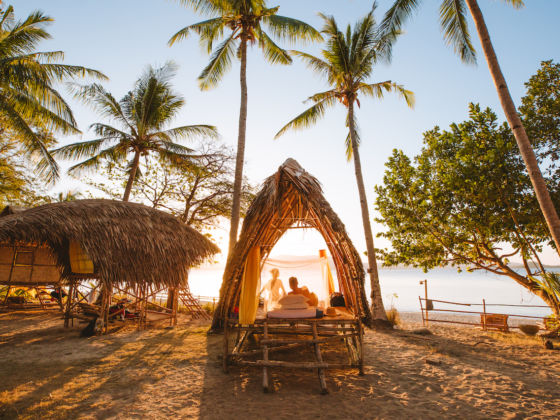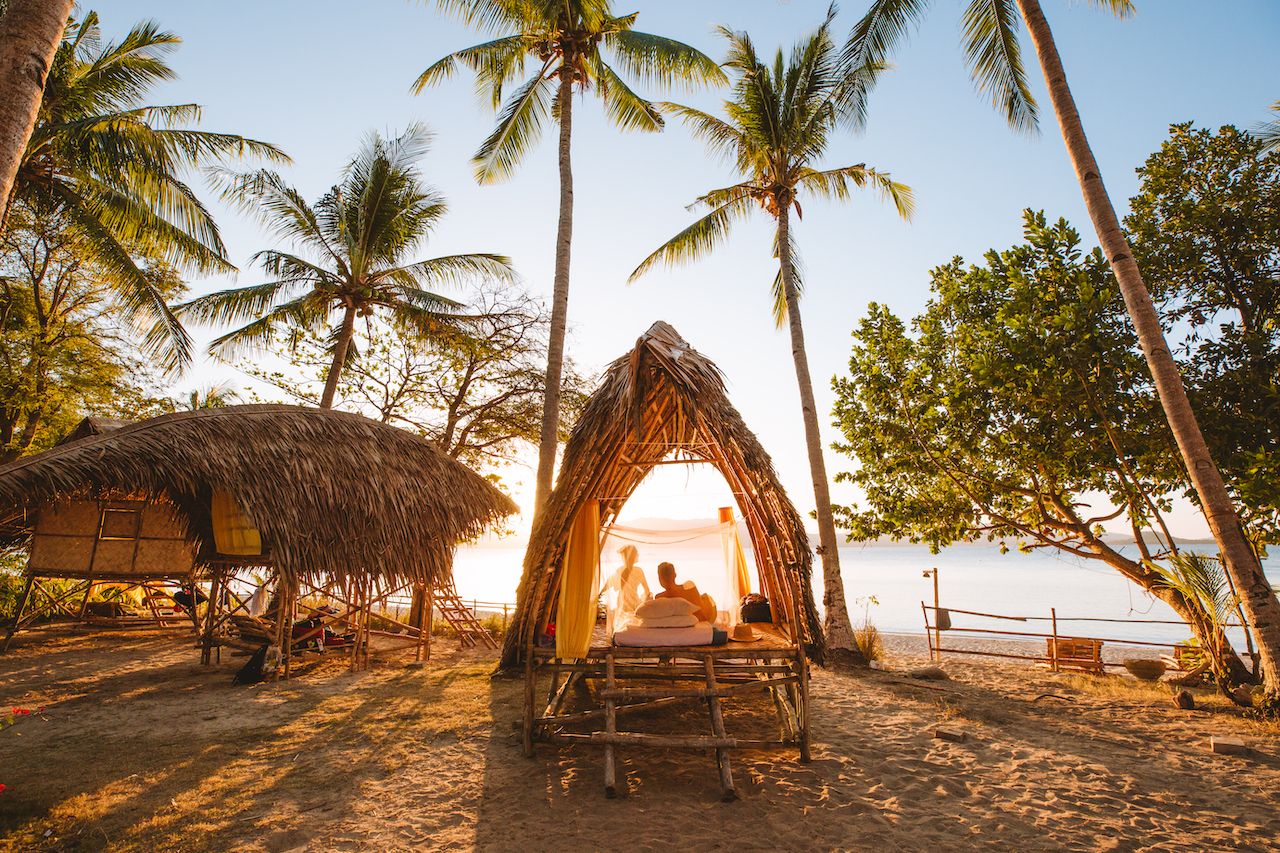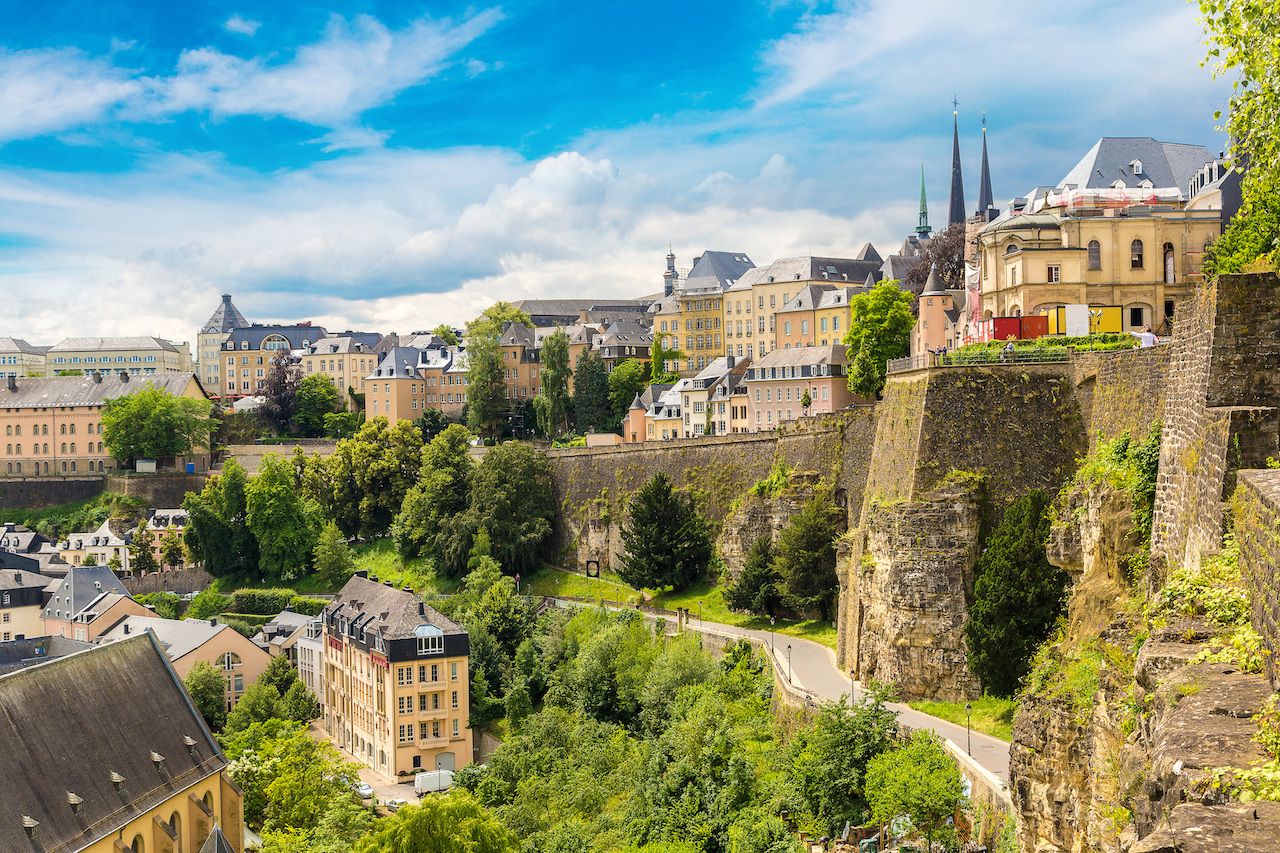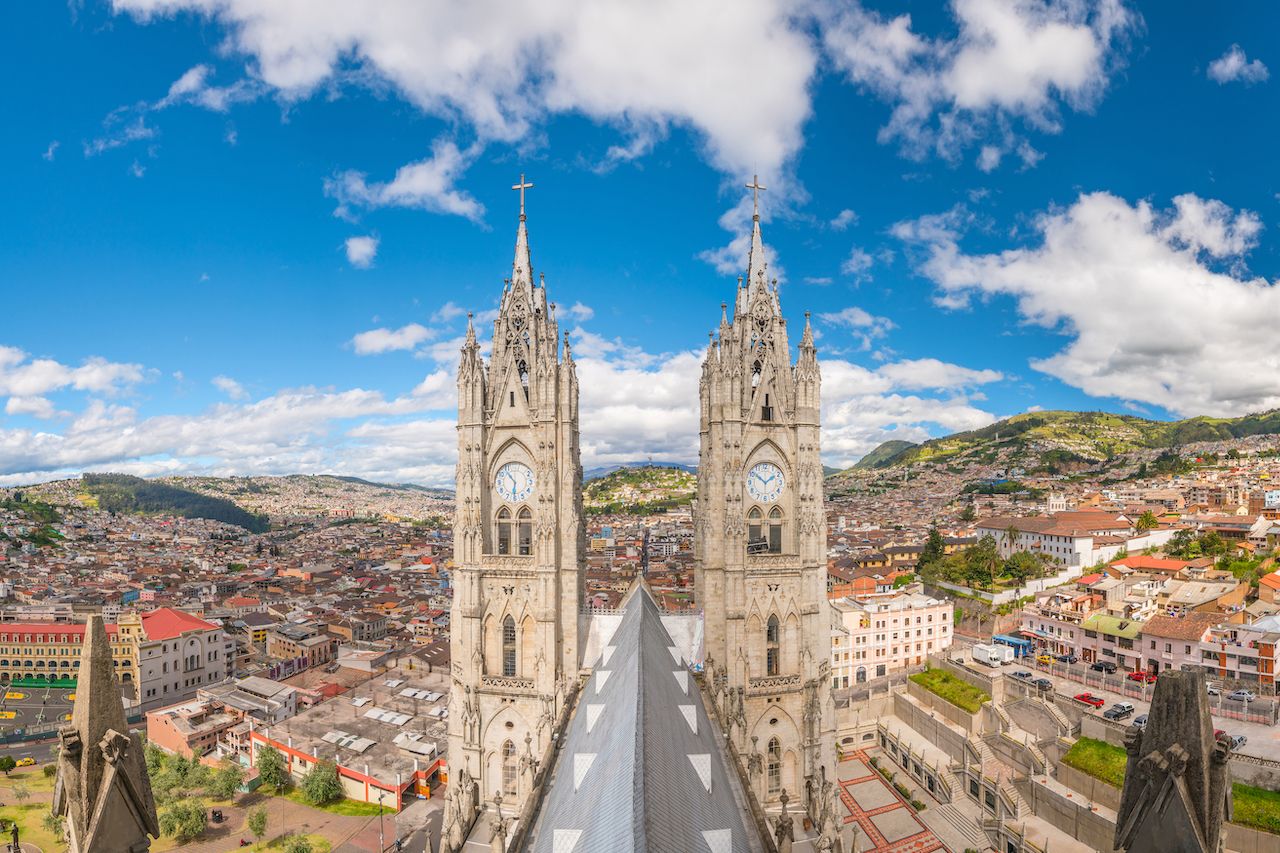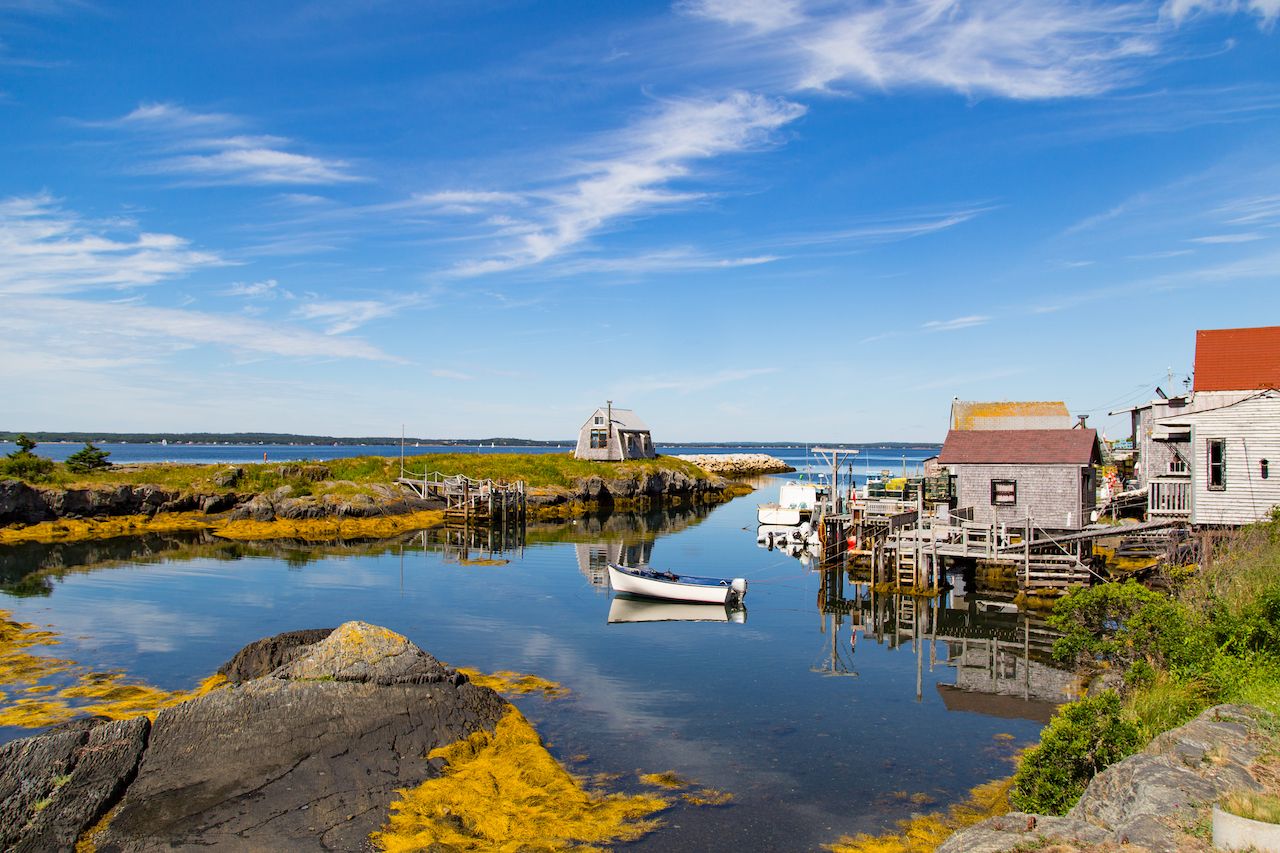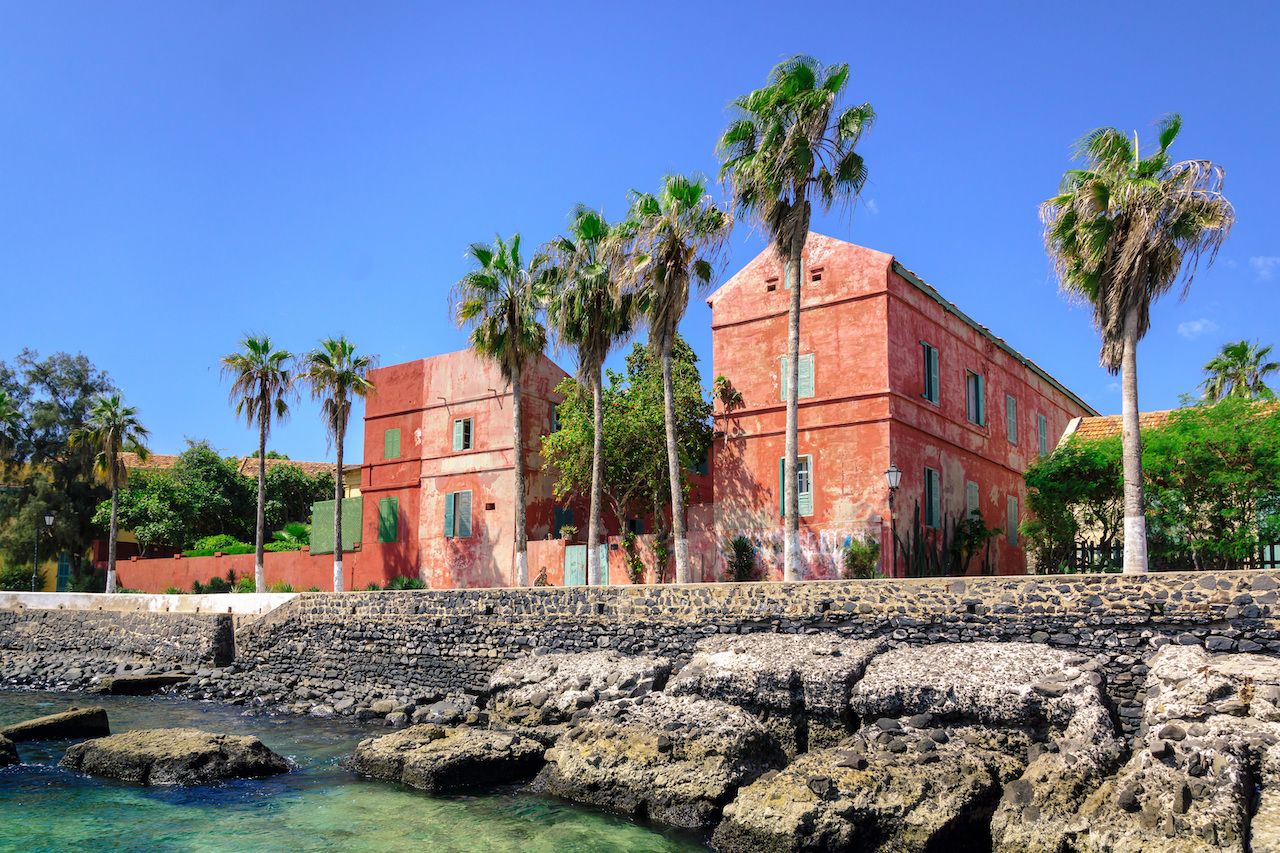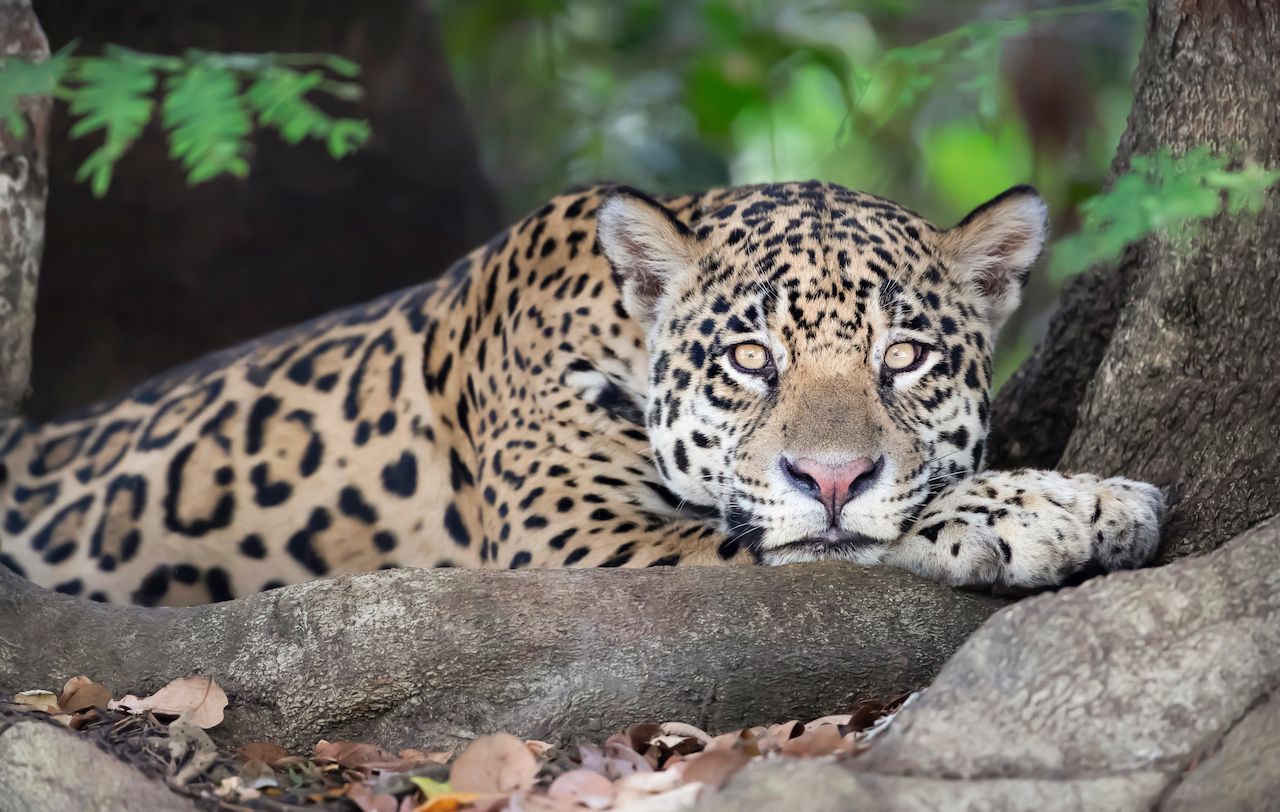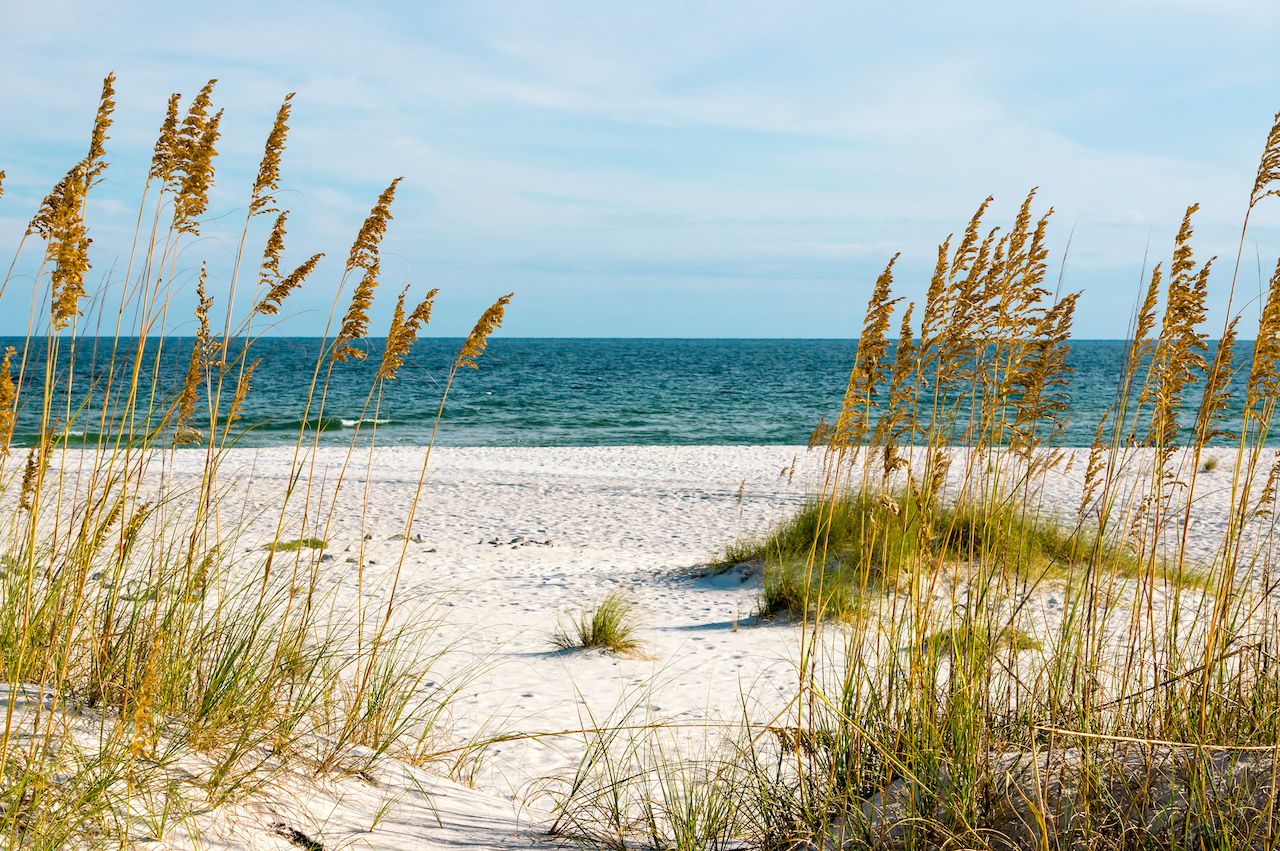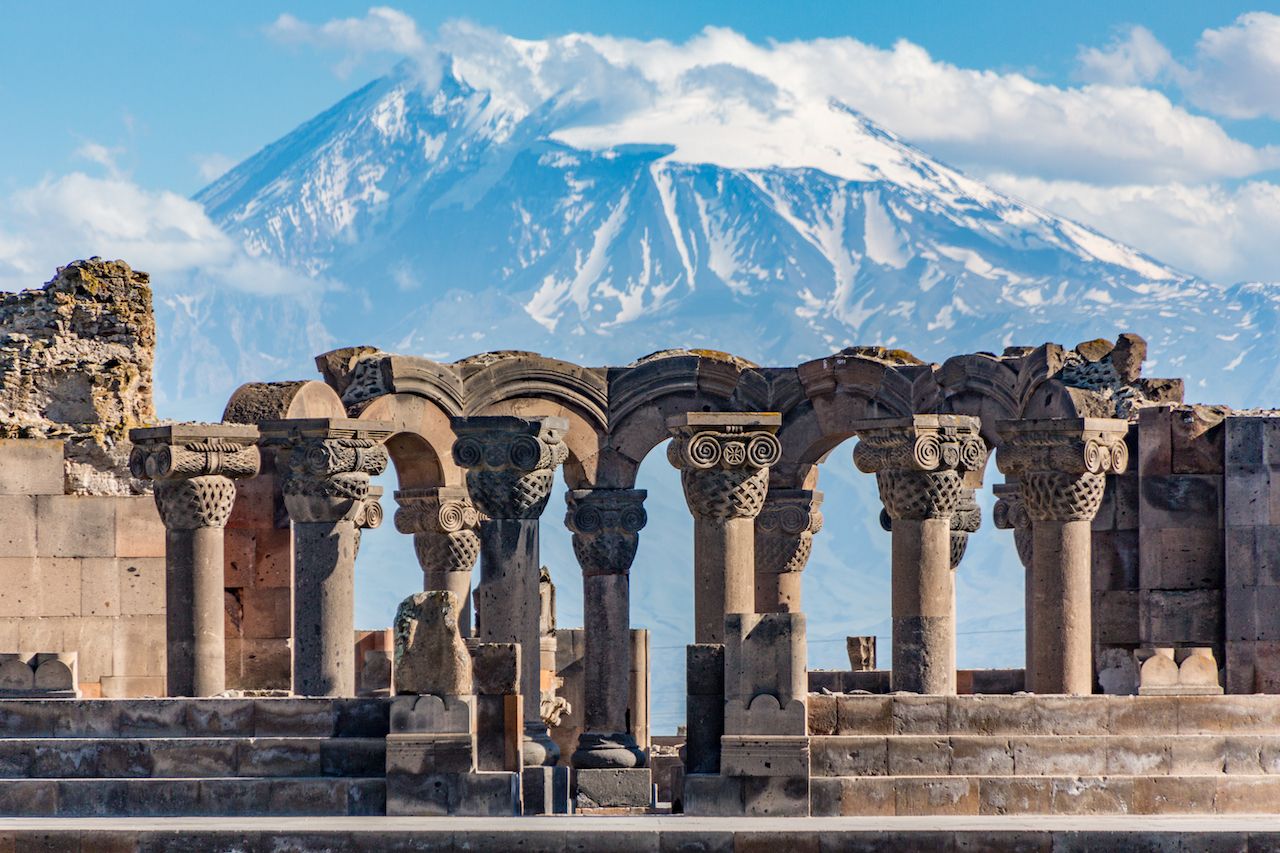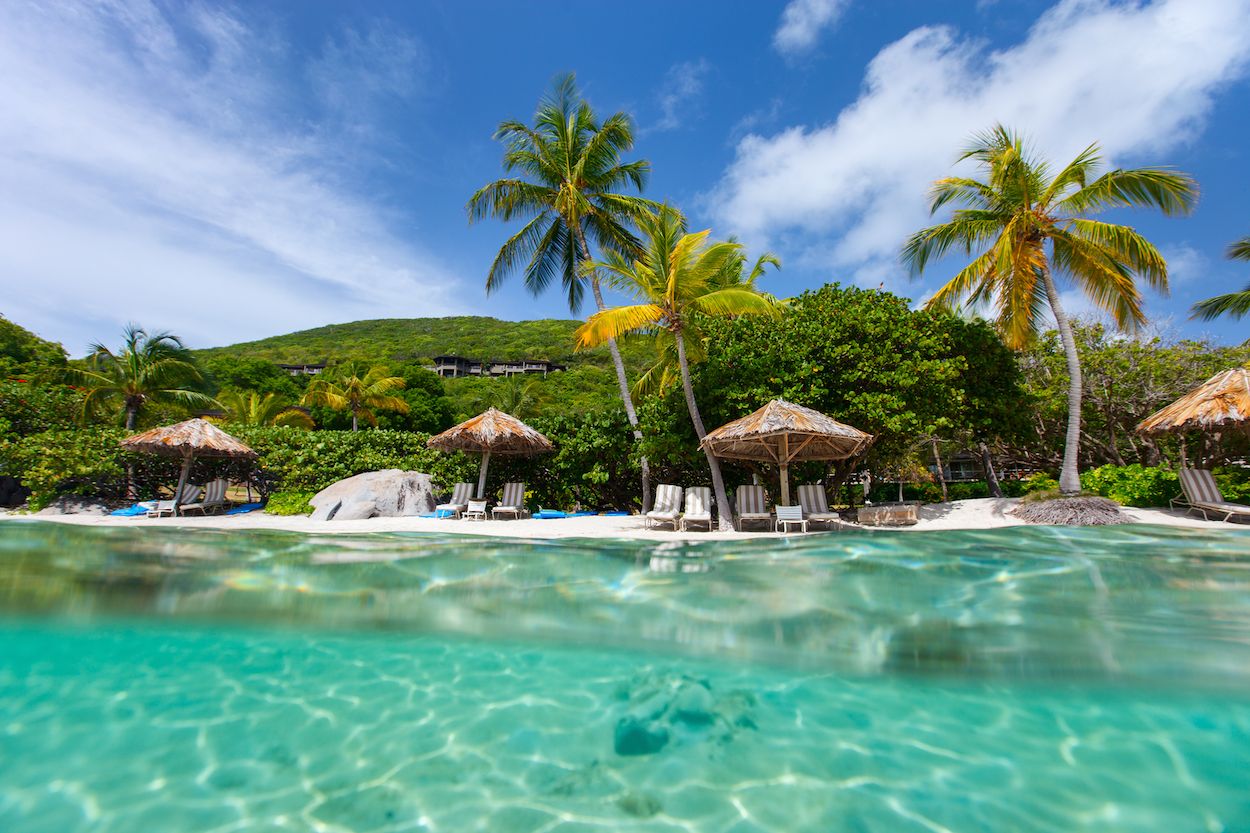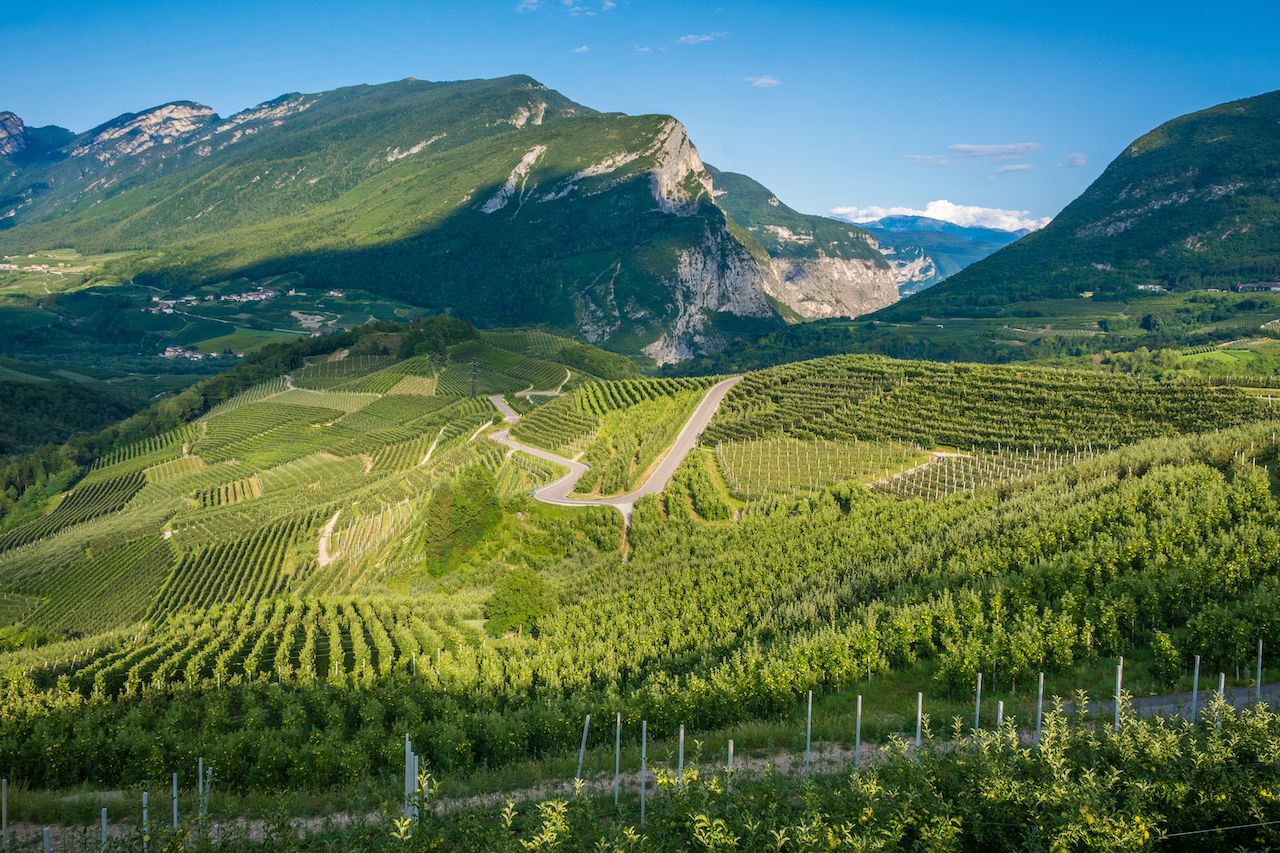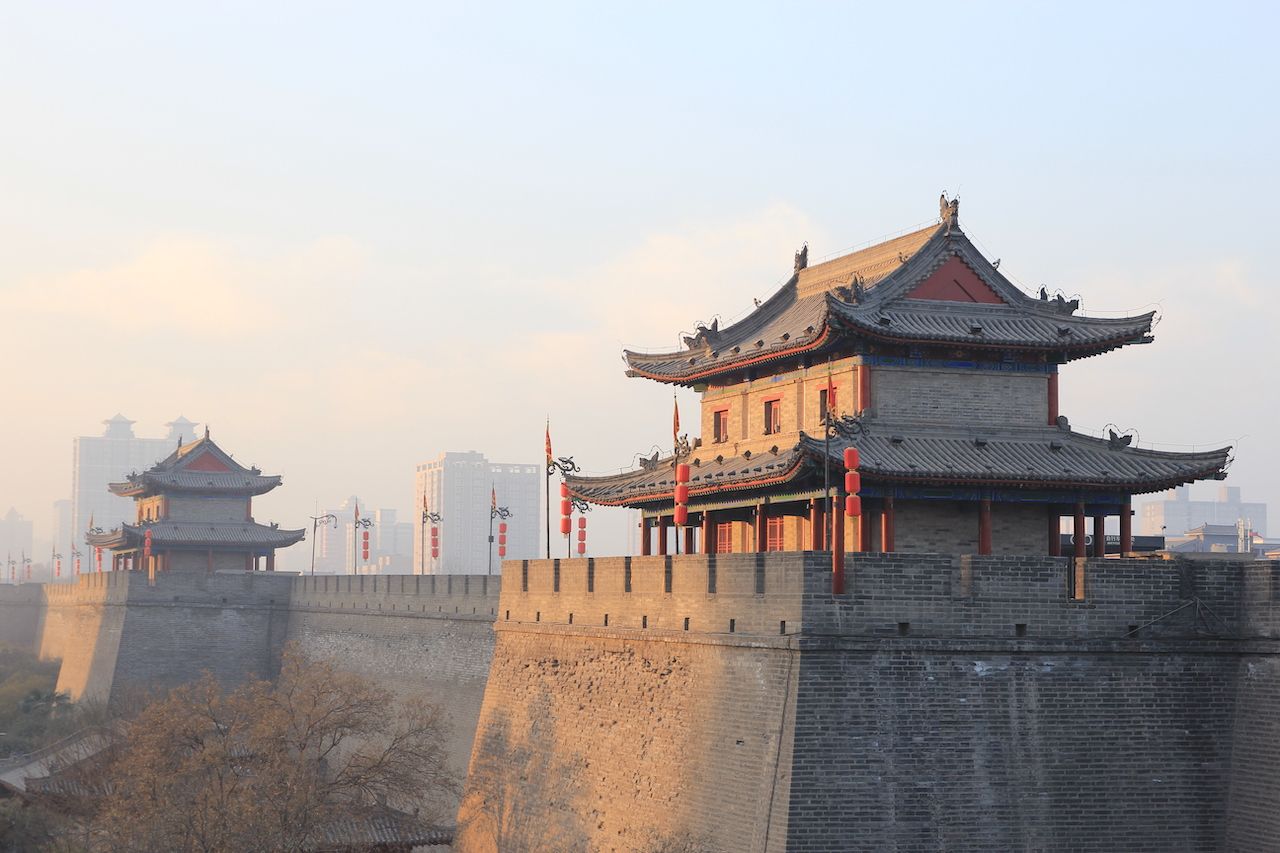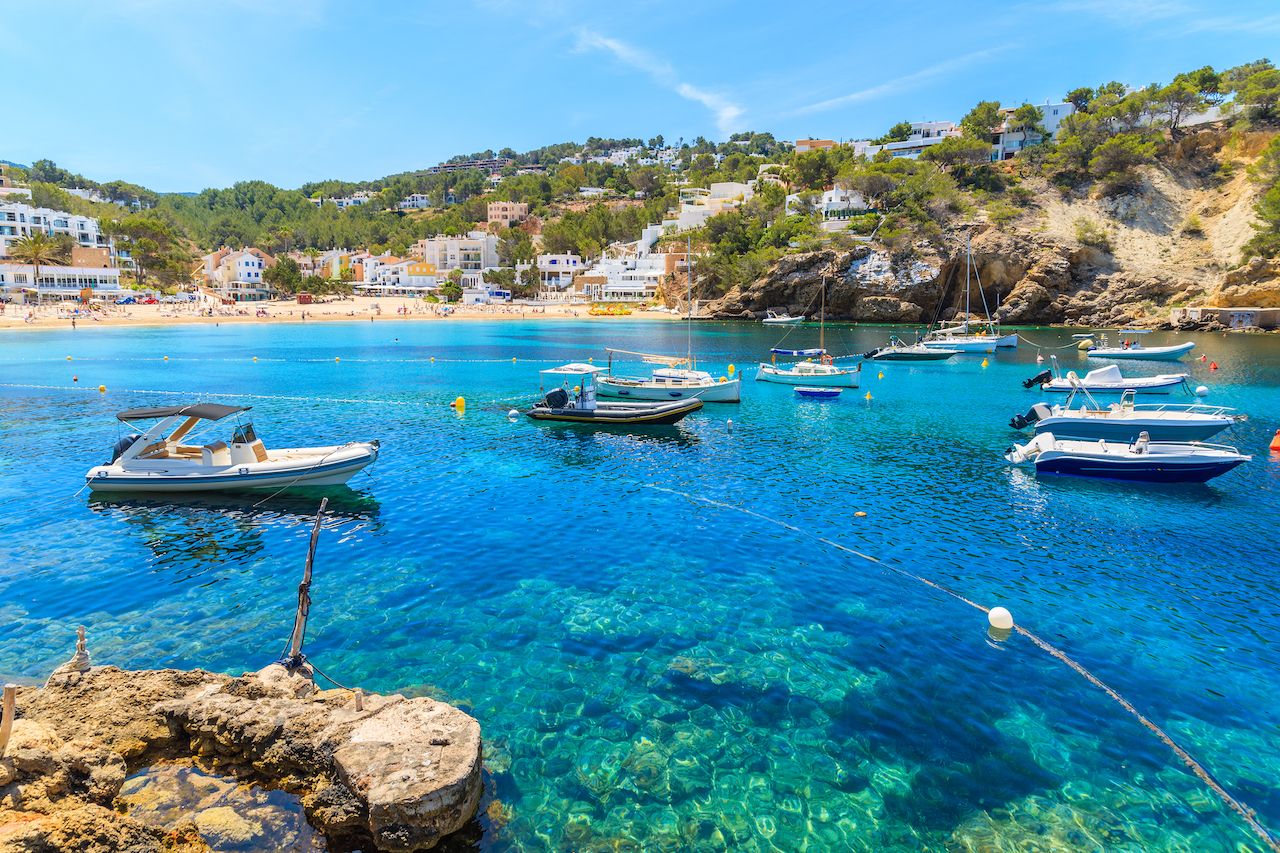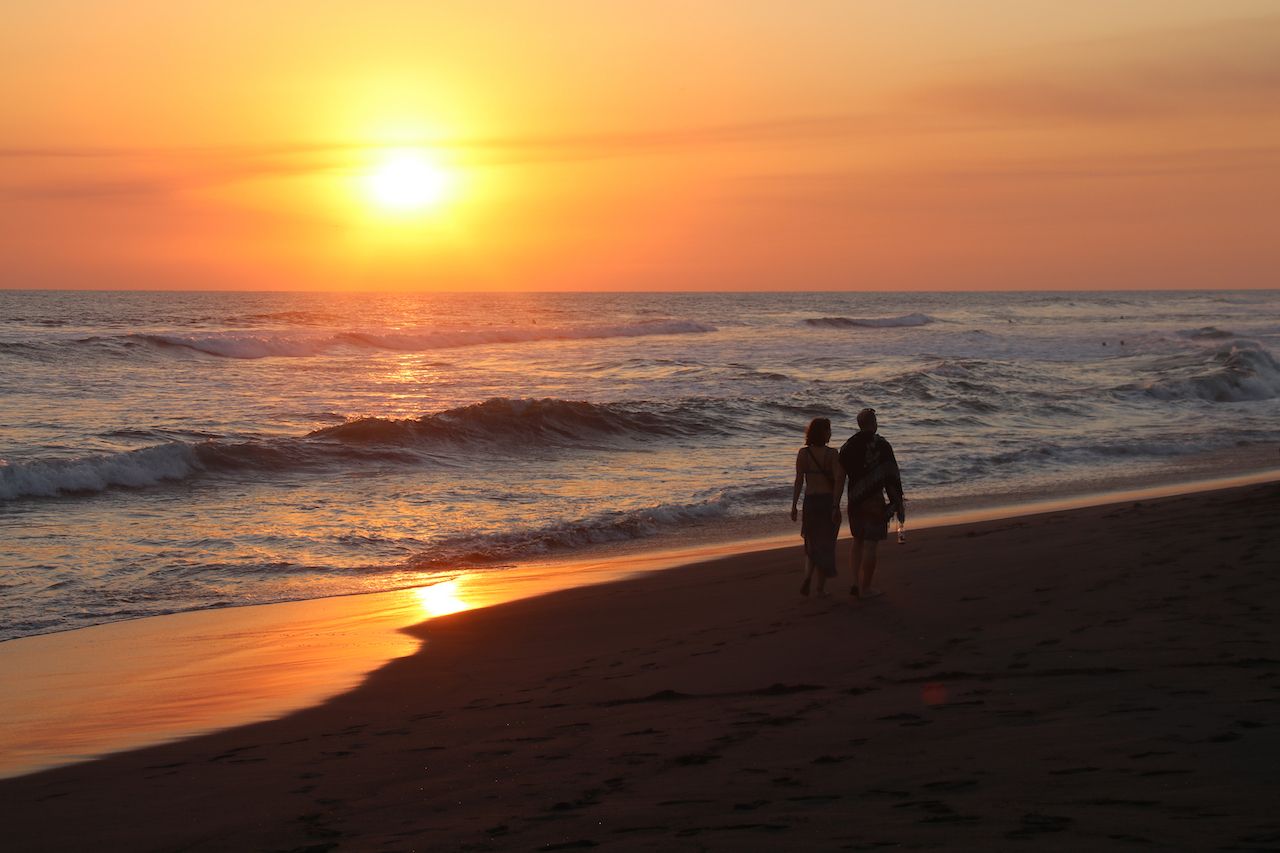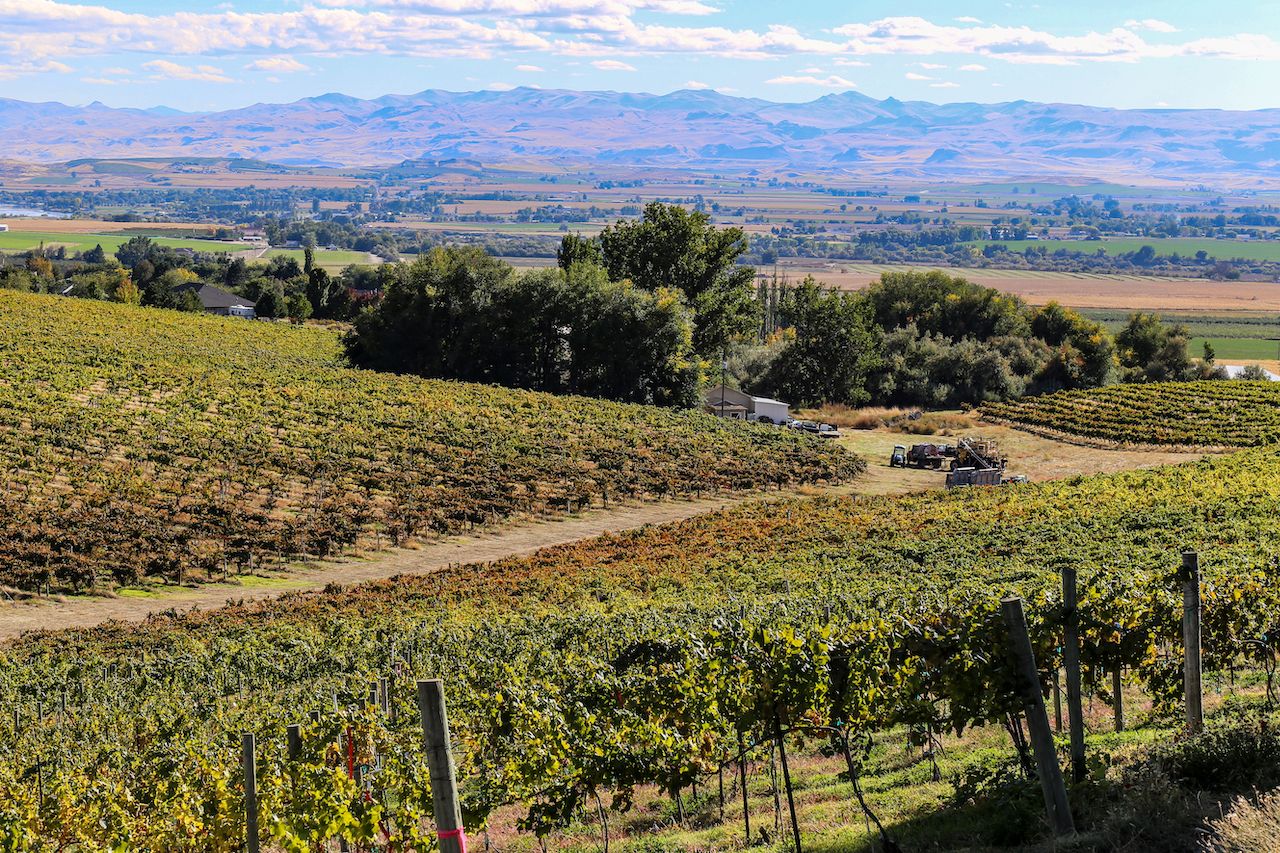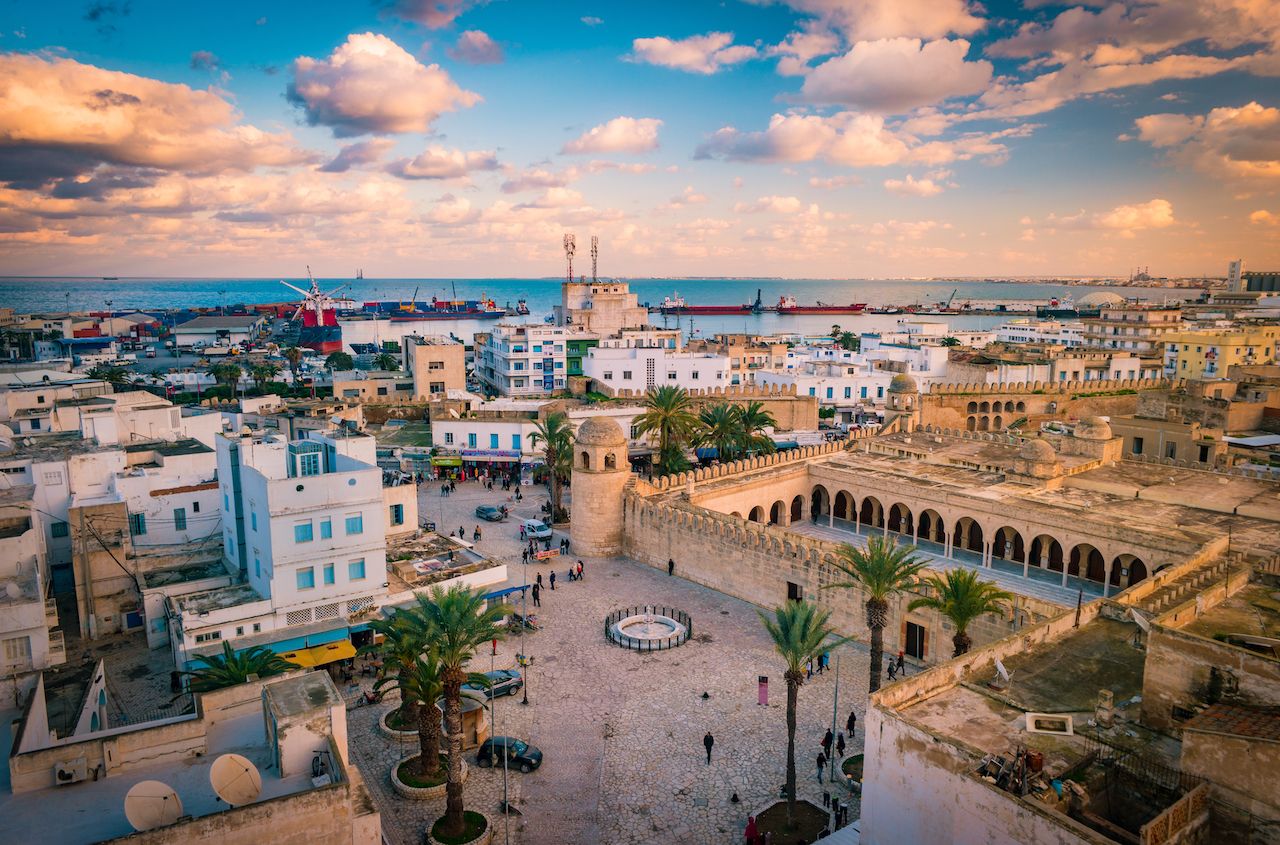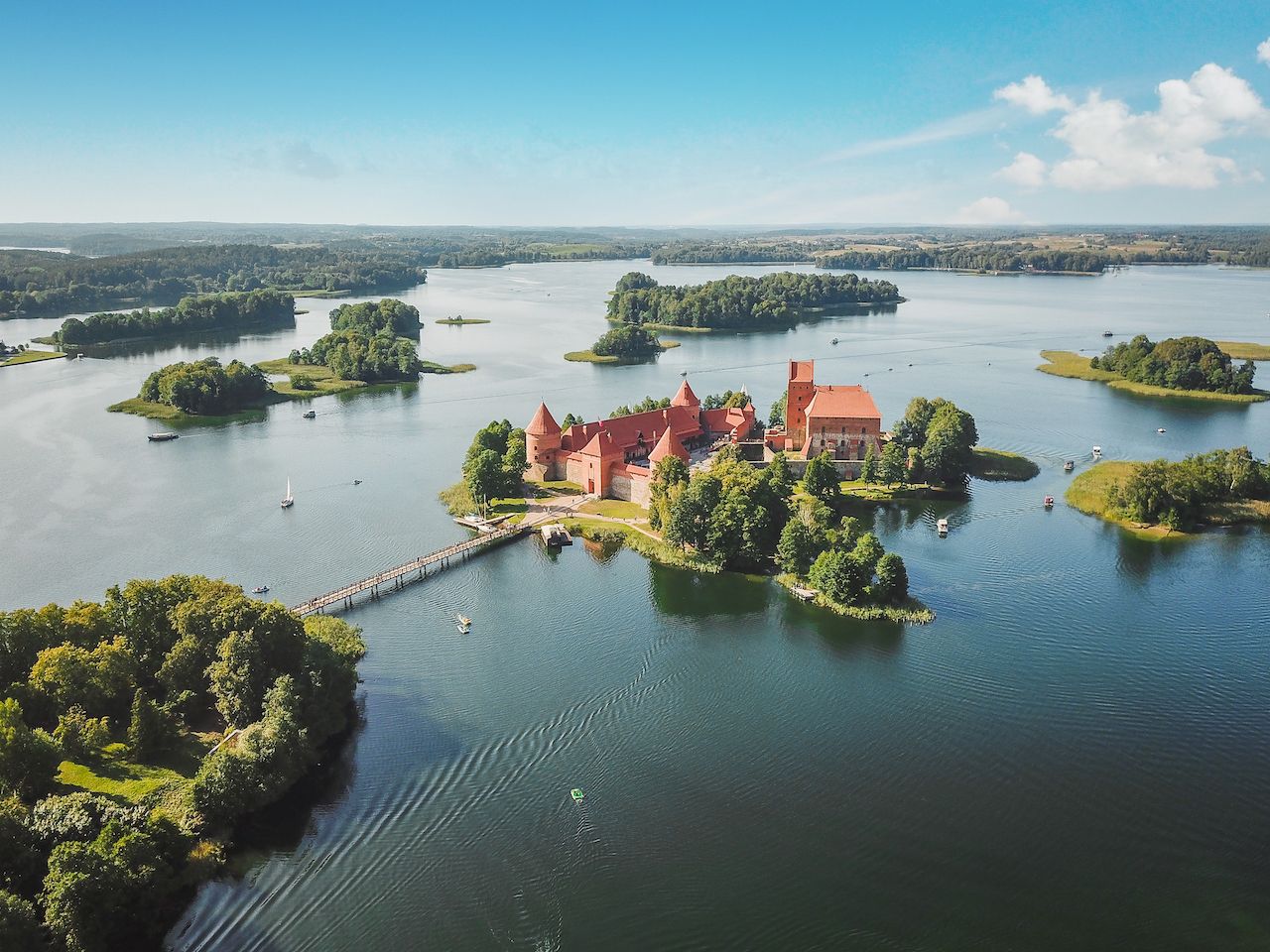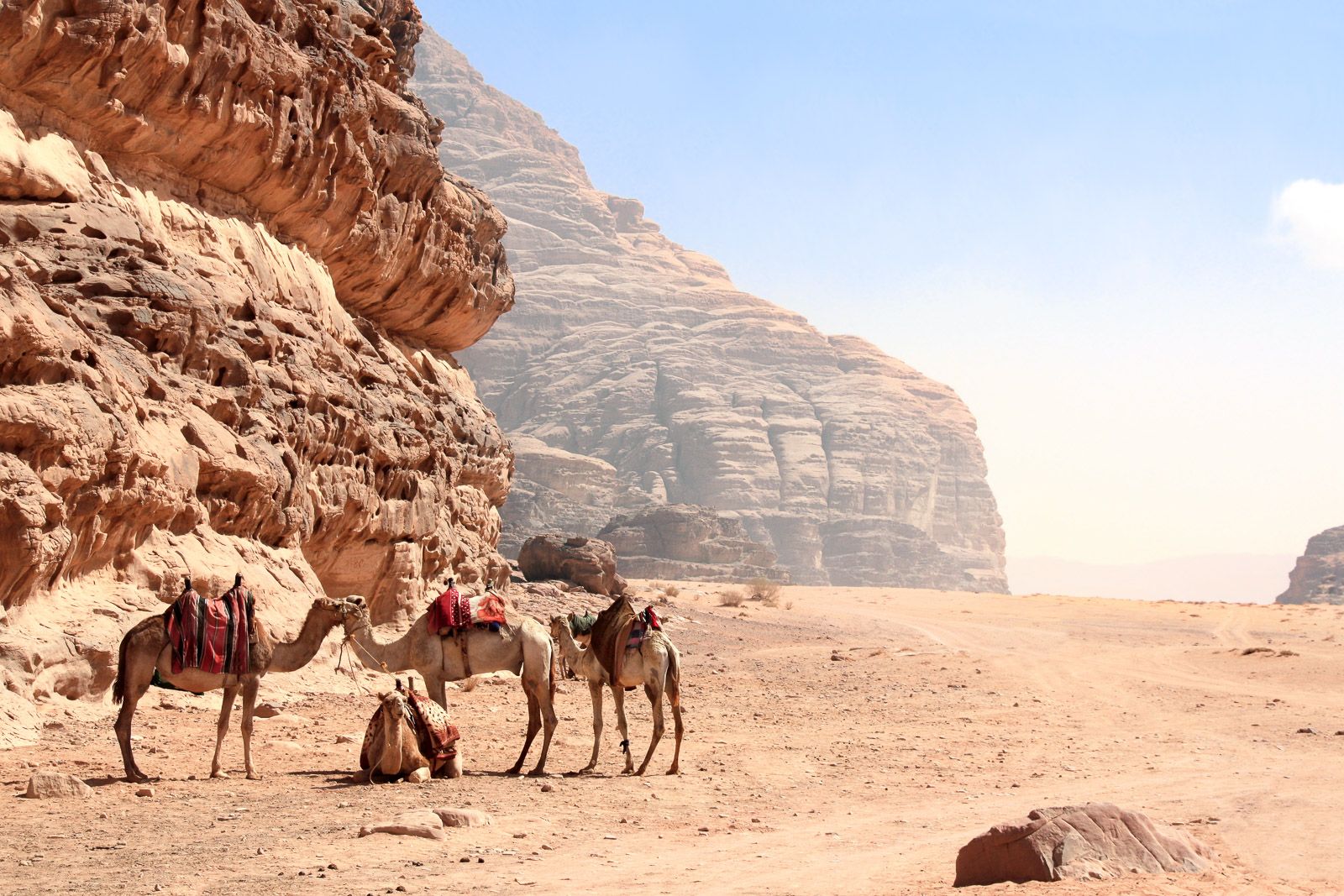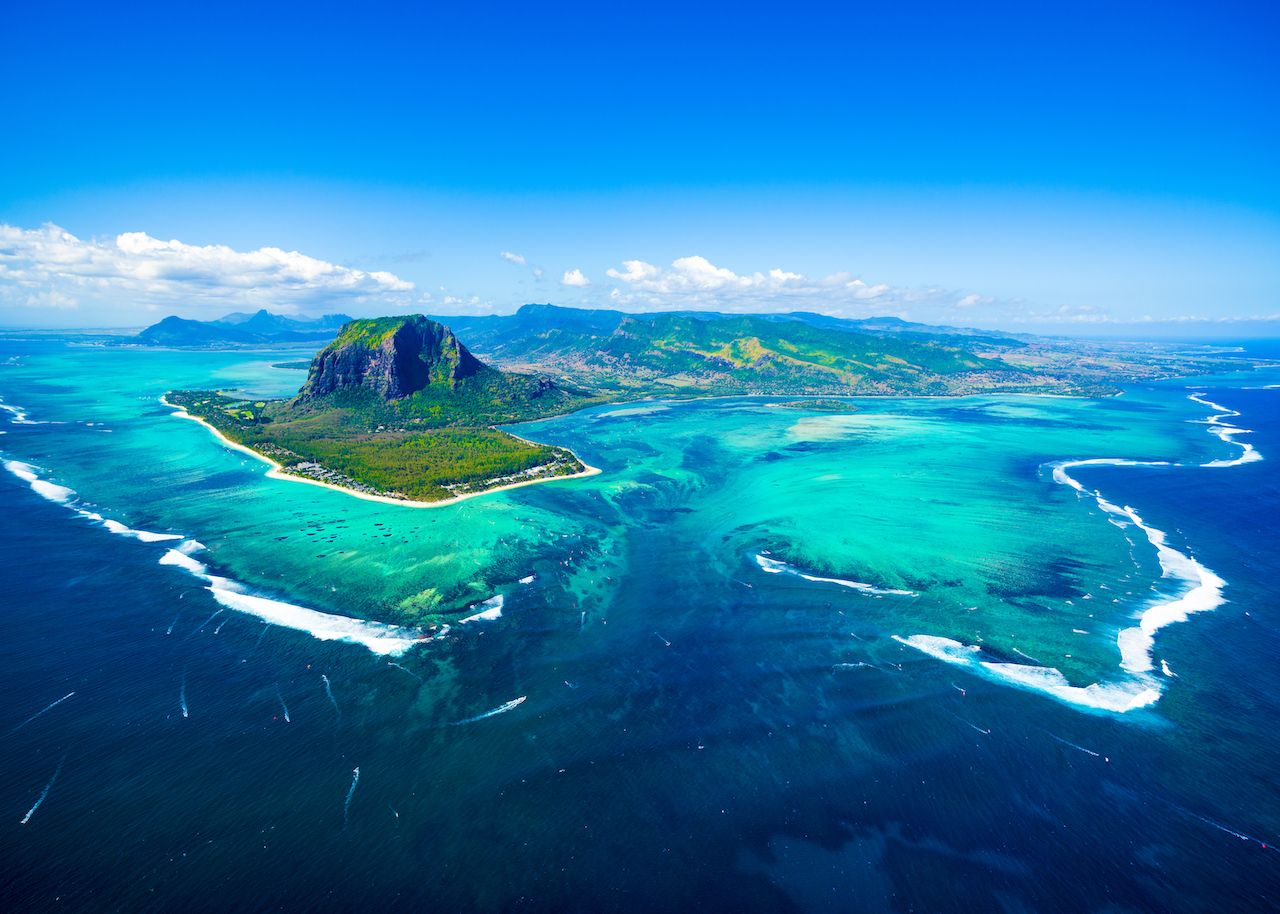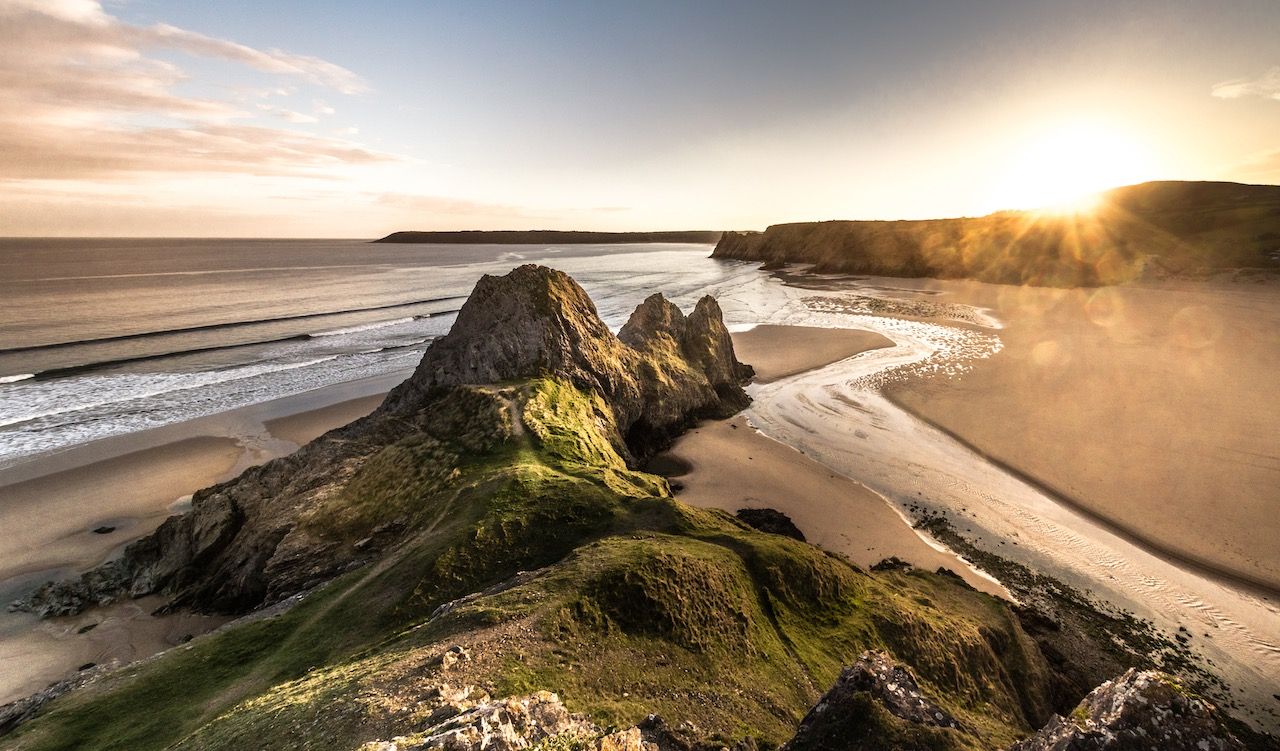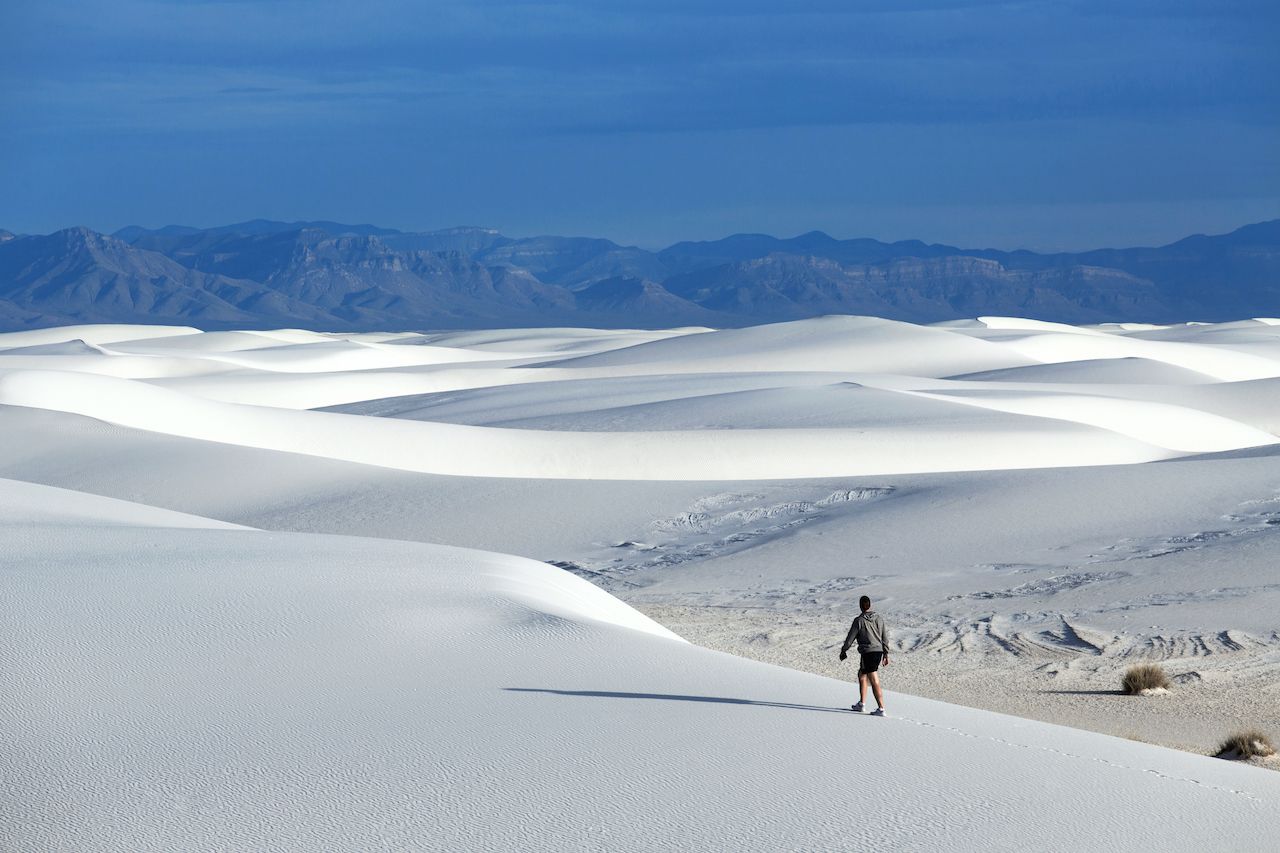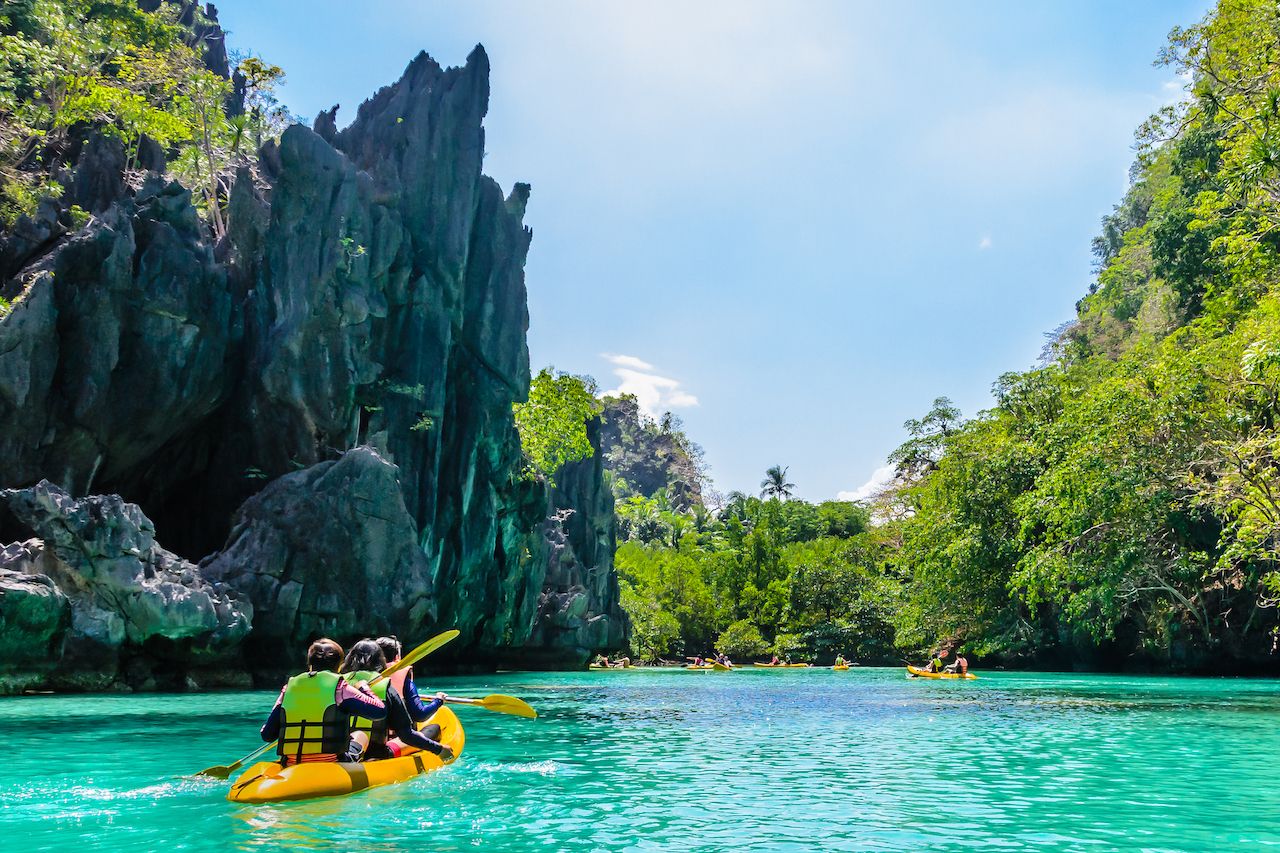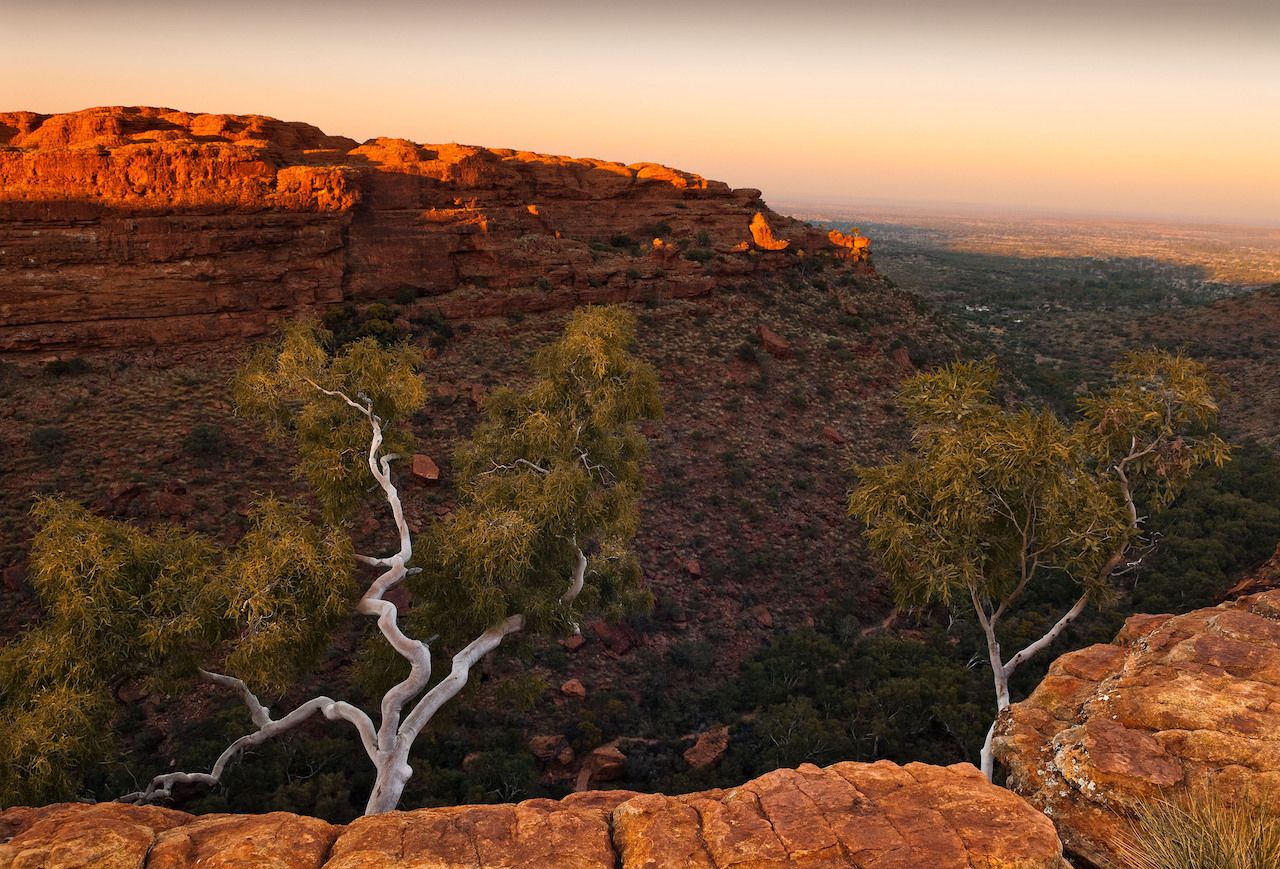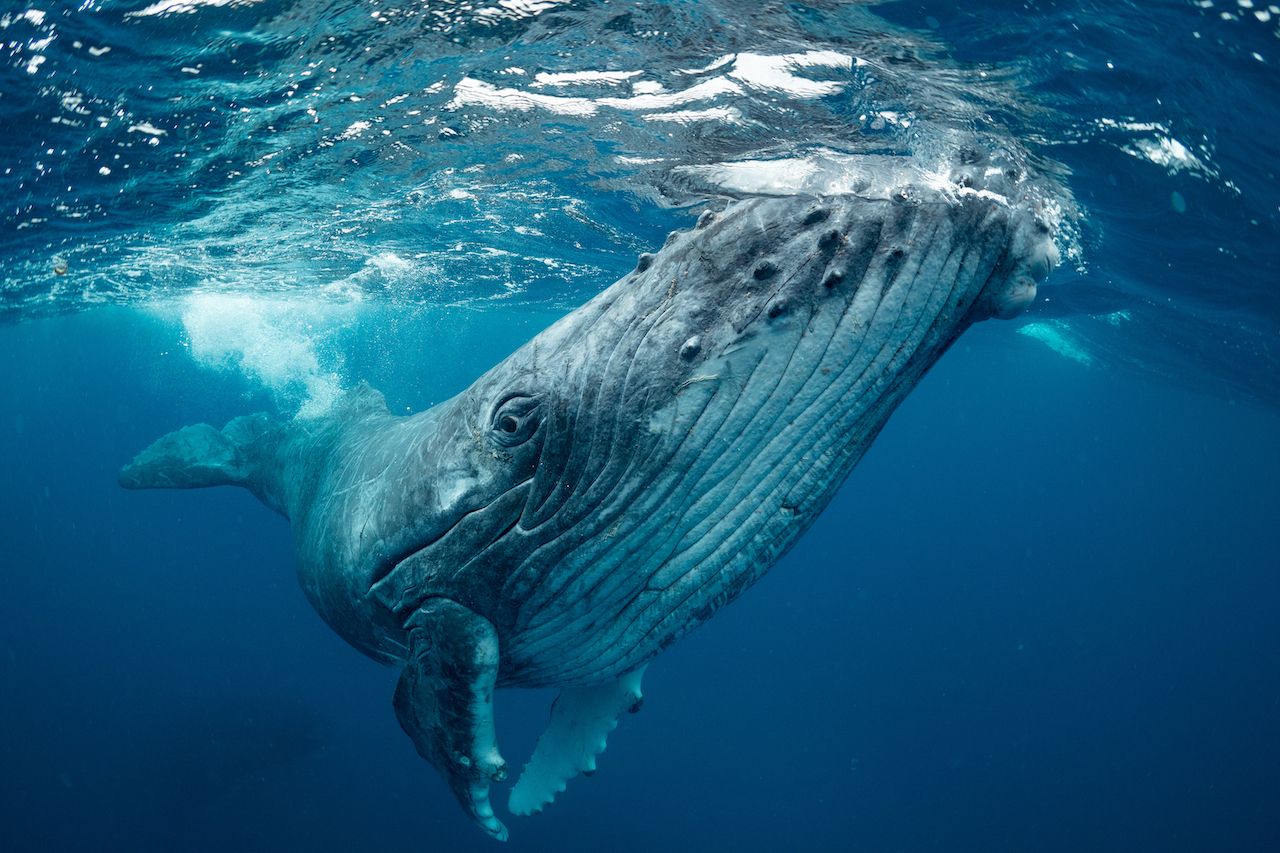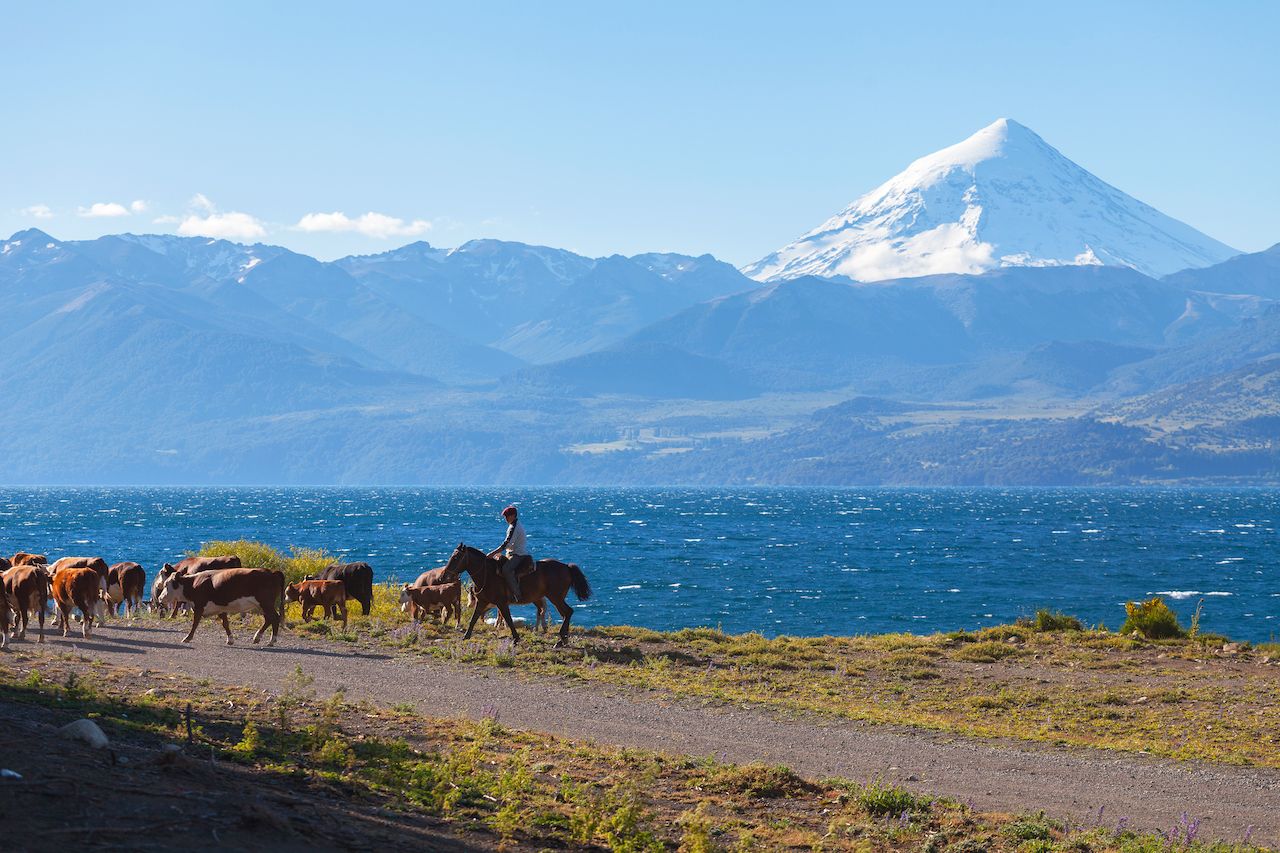We are now at the dawn of a new decade. And though today might not feel much different than yesterday, for some reason years that end in zero always make us think a little harder about what the future will hold. Some think about marriage and children. Others wonder about their career paths. But nearly all of us wonder where the next 10 years will take us around this beautiful blue planet we call home.
While we can’t tell you what your future will hold, or which passport stamps you’ll accumulate between now and 2029, we can at the very least help point you in the right direction. Our staff of editors, writers, videographers, and producers have been lucky enough to explore a lot of our planet, and we’ve conferred to find the following as the best destinations to hit this year. Whether it’s new attractions you’ll want to be among the first to visit, places that may not be the same a few years down the road, or old favorites that never disappoint and are still worthy of your attention. Every destination on this list has something amazing to offer. Travel to any of these places and you may start the new decade with the best year of your life. In no particular order, here are the 25 best places to travel in 2020.
Editor’s note: These entries were written by Matthew Meltzer, Noelle Salmi, Alex Bresler, Tim Wenger, Morgane Croissant, Aryana Azari, Eben Diskin, Nickolaus Hines, and Laura Reilly, with nominations from the entire Matador Network staff.
1. Luxembourg
Sandwiched between Germany, France, and Belgium, Luxembourg has been heavily influenced by its neighbors, but the country has carved out a distinct identity in which it takes a great deal of pride. Smaller than Rhode Island in the United States, Luxembourgers have their own cuisine, language, and natural landscapes that are completely distinct from those of their neighbors. And perhaps most importantly for the efficient traveler, it’s small enough that you can explore the entire country in just a few days.
Avid hikers need not travel to the Alps for an epic weekend outdoors. Luxembourg’s 70-mile Mullerthal Trail offers some of the best hiking and cycling in Europe. The trail can be completed in three separate loops, beginning on the edge of the German border near the town of Echternach. Each trail will take you into lush green forests, along calm rivers, and through old villages. Most memorably, you’ll see some pretty epic rock formations and a dramatic canyon, which will make you feel like you’ve stepped into a prehistoric movie set.
Everyone pretty much agrees that hiking should always be followed by drinking, and Luxembourg certainly has you covered. Luxembourg’s lesser-known wine country lies to the south in the Moselle Valley, chiefly around the town of Remich, and is filled with family-owned wineries like Kox winery. If you only try one wine in Luxembourg, make it the Crémant; it’s a staple of the country, and Luxembourgers drink it with pretty much everything.
Just as Luxembourgers combined French and German to create a unique language, they’ve also incorporated foreign culinary influences to make a truly special national cuisine — described by one Luxembourger as “French quality in German portion sizes.” Don’t leave without trying bouchée à la reine (a stuffed pastry filled with chicken, mushrooms, and a thick sauce), Judd mat Gaardebounen (smoked pork with beans), bouneschlupp (green bean soup), and cheval (horse, which isn’t nearly as gamey as you’d think).
2. Ecuador
Ecuador isn’t the gateway to the Galapagos. It does claim the wildlife-rich archipelago 800 miles off the coast, and most travelers do visit by way of Quito or Guayaquil. But Ecuador’s more than a means to the island chain’s end. Millennia of human history is woven into a landscape that darts between Andean peaks, Amazonian rainforests, and Pacific beaches, from the Incan ruins at Ingapirca to the Spanish colonial centers of Quito and Cuenca, where 17th-century churches still manage to look grand even while dwarfed by endlessly unfurling hills.
Ecuador’s a big-things-in-small-packages destination. You could tour it laid-back, thumbing through Otavalo textiles and tagua nut jewelry, downing bowls of popcorn-topped ceviche, and admiring Andean pipe flutes high up in mountain villages. Beyond its cultural centers, though, Ecuador’s highlands beg to be hiked, biked, or toured on horseback. Its coast calls out to be surfed. Trek around Cotopaxi National Park’s nearly 20,000-foot volcano, then rest your muscles in the Papallacta hot springs a few hours away. Later, venture into Mindo’s cloud forest to survey its 1,000-plus resident bird species, the mere tip of Ecuador’s wildlife iceberg.
When it’s time to trade in land animals for marine life like dolphins, sea lions, and manta rays, cruise to Isla de la Plata, the smaller, cheaper alternative to the Galapagos that’s every bit as worthwhile. And if seeing Darwin’s darling archipelago is still on your bucket list, consider doing it in style: Thanks to the recently launched, sustainably-minded Celebrity Flora cruise ship, travelers can take in the island scenery from the lap of luxury and even sleep under the stars for an unforgettable night of glamping on the ship’s top deck.
3. Atlantic Canada
Canadian wilderness, staggeringly beautiful as it is, can sometimes feel a little inaccessible. If you live east of the Mississippi, getting to the rainforests of British Columbia or the snow of the Canadian Rockies involves multiple flights, a long car ride, and sometimes a helicopter or water plane. For whatever reason, East Coast Americans forget the sweeping cliffs, crashing coastlines, and pastoral beauty of Atlantic Canada are a painfully short flight away.
The provinces of New Brunswick, Newfoundland and Labrador, Nova Scotia, and Prince Edward Island aren’t known for much in the US outside of Anne of Green Gables, mussels, and lox. But take the short flight north and you’ll find the most spectacular scenery you never knew was so close. Each province provides its own brand of outdoor adventure, with whales, puffins, and other subarctic wildlife abounding. Kayak through the world’s highest tides in the Bay of Fundy, padding through quizzical rock formations topped with emerald trees. Speed through the fjords of Gros Morne National Park. Hike the bright cliffs of the Green Gables Trail.
That’s not to say you need to lump all of Atlantic Canada into one trip. You could easily fill a week touring the Victorian homes and marshy lowlands of Prince Edward Island, or exploring the rugged shores of Cape Breton in Nova Scotia after fueling up along its chowder trail. You can also spend a couple of days in St. John, the oldest city in Canada that’s a little like visiting a cold-weather St. Augustine, cruise ships and all. But if you did visit all of the provinces at once, well, that would be one epic road trip. Atlantic Canada might not be the Canada you’re altogether familiar with, but it’s absolutely the Canada you need to discover this year.
4. Macao, China
Of the expanding network of UNESCO Creative Cities of Gastronomy, nowhere is multicultural influence more apparent than in Macao. The city gained the world’s attention as an international gambling hub, and while most of the major casino operators including Wynn, Venetian, and MGM operate resorts in the city, it’s what happens in Macao’s kitchens that’s actually worth experiencing. You’ll taste the spicy flavors of the Pearl River Delta in the cafes of Cunha Street and Coloane Village, and experience the iconic cooking techniques of the motherland in dishes like Peking duck at Beijing Kitchen. Eat dim sum on a street corner and compare it with the high-end counterpart from the Grand Palace Restaurant inside the Legend Palace Hotel.
After more than 400 years under colonial rule, the Portuguese left their mark on the city’s cooking as well. This is experienced most commonly — and quickly — by grabbing a box of legendary egg tarts, which originated at Lord Stow’s in Coloane Village and is available at street food stands everywhere in the city. For a more formal experience, sit down over the piri piri grilled chicken at Albergue 1601 in the St. Lazarus Quarter.
Between your intermittent gorging episodes, walk around the UNESCO Heritage city center past the Na Tcha Temple and the ruin of St. Paul’s, up to the Mount Fortress and the old city wall that for centuries protected it all from approaching seafarers. If you visit Macao without ever stepping foot in a casino, you’re doing it right. And with no visa requirement for stays up to 30 days — and a pretty epic bridge connecting the island with both Hong Kong and mainland China — Macao is an ideal stopover en route to just about anywhere in Southeast Asia.
5. Senegal
Senegal has long been one of the most charismatic countries in West Africa, with lovely beaches, a fascinating mix of local and French culture, and a dynamic music scene. Since late 2018, the capital of Dakar has also housed the Museum of African Civilization, an ambitious 150,000-square-foot gallery, some of which was left empty — to be filled with African artifacts seized by European powers during colonial times. Just last year France returned a historic sword to Senegal, ostensibly as a symbol of its readiness to give back more.
The museum’s exhibits span everything from the origin of humankind to the spreading of African civilization in North America via the slave trade. Offshore from Dakar, Gorée Island is a moving memorial to that slave trade, with its House of Slaves a grim testament to the horrors of slavery. Another slave trade memorial is located due north in Saint-Louis, in a paradoxically charming location with colorful colonial architecture. Dakar is also home to the biggest statue in Africa, the African Renaissance Monument, a 160-foot-tall bronze behemoth that cost an astonishing $27 million to build.
Not far from the monument is Plage de Mamelles, one of Dakar’s amazing beaches, which are among the greatest in West Africa. You could also visit Ngor or Marabouts beaches, and even try the waves at surf spots like Vivier. In the far south, Cap Skirring has empty beaches and plenty of surf camps.
Senegalese food is delicious, with rich stews that draw on influences from northern Africa, France, Portugal, and even Vietnam. You’ll find millet or rice; vegetables like okra, eggplant, and carrots; and plenty of fish or sometimes beef and chicken on the menu. As Senegal is a predominantly Muslim country, you won’t find much pork, but in the country’s clubs and many hotels you’ll find all the cocktail and ice-cold beers you need.
6. Pantanal, Brazil
Due south of the Amazon rainforest lies the world’s greatest tropical wetlands, an area with waters that supply vast swathes of the South American continent. Much of this area is sparsely inhabited by people but rich in plant life and more animal species than you’ll find in the Amazon itself.
Among the animals to spot here are jaguars, which are found in greater density in the Pantanal than anywhere else on earth, and gentle, plant-eating capybaras, the planet’s largest rodents — measuring up to over four feet in length and weighing nearly 150 pounds. You might also see caimans and howler monkeys, anteaters, tapirs, ocelots, and giant otters. Above you, you’ll see storks and brightly hued macaws, while piranhas lurk in the waters below.
Much of the area is flooded during its summer rainy season from December to March, so you’ll look for animals not just on land, but via river cruises as well. Getting to the Pantanal is challenging, involving airplanes, four-wheel-drive vehicles on bumpy roads, and possibly even a riverboat. Once you get there, though, there are several lodges to choose from. One of the first in the area was the no-frills Barra Mansa; it’s run with a thoughtful local touch and fills up quickly in the dry season. You can also choose from a few luxury lodges like the Caiman Ecological Refuge.
Interest in the Pantanal has grown steadily among Brazilians over several years, with foreign visitors just now beginning to give the region the attention it deserves. It’s one of the world’s best places for a safari outside of Africa, and a top spot for freshwater snorkeling. In 2020, we also encourage you to visit the Pantanal as a way of supporting the environment, as the region is threatened by extensive cattle ranching. If you want to travel to save the planet, show Brazil’s government that the Pantanal is a worthy tourist destination that needs to be preserved.
7. Gulf Coast, United States
Technically, the United States has over 1,600 miles of coastline along the Gulf of Mexico, stretching from the southern tip of Texas all the way around to the Florida Everglades. But the must-do road trip of 2020 will be through the 150-or-so miles that stretch from the Alabama-Florida border through Mississippi to the Louisiana Bayou.
For starters, this year will see a couple of huge attractions coming to the Gulf Coast. The much-anticipated Gulf Coast Zoo in Gulf Shores, Alabama, is set to open early in the year, then a few months later, Gulfport, Mississippi, will open the Mississippi Aquarium on April 30. Time a road trip to hit both of those, and it can coincide with the annual Mullet Toss at the iconic Flora-Bama bar on April 26, when light-beer fueled competitors see who can throw a dead fish the furthest across the Alabama-Florida state line. In addition to being one of the great American cultural experiences, it’ll also introduce you to the soft powdery sand and turquoise waters of Alabama’s coastline.
Down the road in Mississippi, you can relax for a night of bar-hopping down Government Street in Ocean Springs, then win back the cost of your trip at the resort-style casinos in Biloxi. After hitting the new museum in Gulfport, meander off I-10 a bit and find the artists’ enclave of Bay St. Louis, where art galleries and pay-what-you-want cafes sit right on the Gulf of Mexico.
Speaking of the bayou, continuing into the swamps of Louisiana will introduce you to some of the most unique cuisine in the country. You’ll experience the best of it at classic Cajun restaurants like Leeville Seafood, Fremin’s, and Rose’s Cafe, stuffing yourself with crawfish and overstuffed oyster po’ boys — and maybe stopping for a little gator spotting or frog gigging along the way. A trip through the Gulf Coast is a sun-soaked education in a part of the country most outside the South haven’t explored, and it’ll give you a whole new appreciation for the food, culture, and nature the region has in abundance.
8. Armenia
It would be interesting to see how many of Kim K’s legions of fans knew she was, in fact, Armenian before she traveled there in October to have herself and her children baptized. While her recent trip can be credited with sparking a fierce new interest in this country for many, there’s so much more to this captivating destination than Kardashian heritage. Set between Turkey and Azerbaijan, Armenia is full of curious ruins set under towering mountains.
Though it’s landlocked, Armenia still has one of the most beautiful beaches in the region at Lake Sevan, the largest freshwater alpine lake in Eurasia. Take a visit there and hit the Hayravank Monastery, a lakeside compound that dates back over 1,000 years. You can also visit the Etchmiadzin Cathedral in Vagharshapat (completed in year 303 and the religious center for Armenians), churches from the 9th century at Sevanavank, and a UNESCO World Heritage dungeon at Khor Virap where Gregory the Illuminator spent 14 years. Armenia also affords the opportunity to taste brandy that’s been in production since the 12th century or taste newer-but-better stuff at production houses like Ararat.
Armenia’s darker history also makes 2020 an ideal year to visit. In late 2019, both the US Senate and Congress voted to recognize the 1915 Armenian genocide, during which 1.5 million Armenians were killed by the Ottoman Empire. Unfortunately, the Trump Administration rejected the votes, denying the mass killings were genocide in the interest of maintaining Turkish allyship. Visiting Armenia, particularly the Armenian Genocide memorial complex on the hill of Tsitsernakaberd, is one of the best ways to stand in solidarity with Armenians past and present.
9. British Virgin Islands
Hurricane Irma recovery might seem like a very 2018 reason to visit somewhere in 2020, what with the swaths of newly renovated or all-new hotels opening all over the Caribbean and the Keys. But the BVIs are the last kids to the Irma renewal party, and they’re without question arriving fashionably late. The much-beloved Bitter End Yacht Club will finally reopen in the middle of the year, with a sparkling new open-air marina and eco-friendly accommodations floating in the tropical treetops. In addition to the Bitter End, the Rosewood Little Dix Bay resort will be open for the first time since 2016 this January, adding yet another luxury option to the islands.
About a half-dozen other new resorts and hotels either opened in late 2019 or are slated to open in 2020, meaning no matter where you stay across the 60 islands and cays, you’ll find something state of the art. There are also improvements to the beaches in Anegada, made over the past couple of years to increase its tourism, which include five new glamping sites at the Anegada Beach Club. Whether you’re traversing through the green mountains across the islands or snorkeling in the crystal blue waters, you’ll see how abundantly the nature here has rebounded, as well. Though nonstop flights from Miami to Tortola were sidelined by the storm, it’s still fairly easy to get here with short ferry rides from both St. Thomas and St. Croix.
10. Trentino, Italy
Most would center a bucket-list wine trip through Italy on Tuscany, with its famously bold reds and even more famous sun. They’d be missing out on Italy’s most exciting rising wine destination for 2020: Trentino. The province is situated in the tip-top of the country, practically on the border of Switzerland, between Venice and the Southern Alps. Take a train to the quaint city of Trento, then rent a car since pretty much all of the wineries are at an extremely high elevation and not exactly abounding in tourist amenities like shuttle services.
The flagship wine here is Trentodoc, an appellation for sparkling white and rosé wines. The small network of 53 producers typically has to explain Trentodoc wine first by explaining what it isn’t: It’s not Prosecco, and it’s not Champagne, though that’d be a much closer comparison. Trentodoc is made predominantly from chardonnay and pinot nero grapes using the metodo classico, which means everything has to follow a rigorous set of rules, from the grapes being harvested by hand to the bottles needing to be gradually turned while it ages.
A more novice palette may think this means that every wine would taste more or less the same — high in acid, tight bubbles, notes of green apple and fresh bread — albeit executed to perfection. But expert tasters will be able to pick up on complex variations in flavor from the terroir, grape blend, and other subtle choices made by producers like Ferrari, Maso Martis, and Cesarini Sforza Spumanti. If you start to crave something different after tasting bottle after bottle of bubbly, Trentino is also home to fruity teroldego reds, super sweet amber nosiola, and plenty of the digestif grappa, a brandy distilled from the skins and seeds of grapes.
You could spend your entire time in Trentino getting buzzed on wine and digging into Alps-influenced, northern Italian foods like speck dumplings and cheesy mushroom polenta. But that would mean overlooking one of the most spectacular outdoor playgrounds in all of Europe: the Dolomites. Whether you spend the winter skiing and snowshoeing or the summer hiking and mountain biking, these majestic, craggy peaks and sprawling countryside are begging to be explored. Don’t worry, a bottle will still be waiting for you when you return.
11. Namibia
Imagine driving the vast desert between LA and Las Vegas, but instead of abandoned water parks and $6-a-gallon gas, you look to the side of the road and see a pride of lions. That’s more or less the driving experience in Namibia, one of the most spectacular desertscapes in the world, filled with Africa’s most sought-after wildlife. You can even find the odd tour here that’ll allow you to walk around with said lions and cheetahs.
Namibia’s surreal visions continue far past the roads, where you can venture out to Etosha National Park and find massive elephants dousing themselves in powdery white sand to help keep cool. Or scale the Sossusvlei dunes and watch the sun change the shapes of the largest sand dunes in the world. Or walk through the abandoned town of Kolmanskop, a ghostly collection of houses reclaimed by the desert.
As interest in Namibia increases seemingly exponentially, 2020 welcomes two posh new luxury lodges at the Olupale Safari Lodge and Sossusvlei Desert Lodge. The former will sit on the northwest boundary of Etosha National Park, and looks like a mirage of air conditioning and swimming pools forged from white sand. The latter will be a hilltop palace in the Namib Desert, where you’ll spend the days spotting wildlife in the desert below, then retire to evenings filled with dune-top dinners and unfettered stargazing.
12. Xi’an, China
For a long time, foreign travelers made their way to Xi’an simply to see the Terracotta Army, an incredible historical site that’s certainly worth a visit. It’s an entire life-sized army made out of clay, with thousands of individualized soldiers, horses, and armor, that was buried for 2,000 years. But travelers are now catching on to the fact that there is a lot more to appreciate in Xi’an other than the rust-colored warriors.
The very reason those terracotta fighters are in Xi’an is that they were part of a mausoleum dedicated China’s first emperor, Qin Shi Huang. Xi’an was home to many regents, as it was the capital for more than a dozen Chinese empires and kingdoms, with a history dating back much further than that of Beijing. Xi’an was also the eastern end of the Silk Road. Today, the influence of that famed trading route can still be felt in Xi’an, which has a notable Muslim Quarter and unique cuisine that reflects the influences from lands due west. Spicy biang biang noodles have flavors of cumin, coriander, and chili peppers, while the lamb breadcrumb soup dates back over 1,000 years.
As old as the soup recipes are Xi’an’s ancient city walls, which have been preserved and rebuilt many times. Walk the walls and take in the contrast between Xi’an’s ancient structures and the modern city of 13 million residents. Be sure to visit the Giant and Small Wild Goose pagodas, which date back more than 1,300 years, as well as the imposing Bell Tower in the center of the city. While none of the original wooden structures remain, the Daming Palace impresses with its sheer scope, as the grounds stretch out over 15 times the size of Buckingham Palace.
2020 is the year to visit Xi’an, as the local government has also introduced a night-time tourist initiative, including opening even more night markets throughout the coming year, promoting more live performances, and improving after-hours transportation options throughout the city.
13. Balearic Islands, Spain
Even the hardest of partiers has to grow up someday. Looking to avoid becoming the Dennis Quaid of islands, Ibiza — along with its Balearic Island brethren Menorca and Mallorca — are shying away from their hard-partying past and embracing their natural beauty and calming breezes. Effectively becoming the Russel Brand of islands, the Balearic Islands off the coast of Spain are turning themselves into a world-class wellness destination.
On Ibiza, head north to remote locations like Portinatx and Santa Eulalia, where you can sign up for a yoga retreat with Ibiza Yoga or settle into a luxury spa vacation at Atzaro. Get up at sunrise to hike to Moon Beach, then dine on farm-to-table Meditteranean cuisine at places like Aubergine and La Paloma or vegan food at Wild Beets. Or, plan your whole trip around wellness festivals like Ibiza Spirit Festival, held every April and October, where you can balance your chakras and get into tantric meditation.
The smaller Balearic Islands offer even more serenity and old-world relaxation. Just a short boat ride away from Ibiza is the island of Formentera. The sail-up restaurant Beso Beach is the place to be for a rosé-drenched lunch on a summer day while the rest of the island is rustic, undeveloped, and great for families. You’ll find even more of that quiet island vibe in Menorca, where new rural hotels turn attention inland toward the island’s well-preserved countryside.
Mallorca, the biggest of the Balearic Islands, may seem an odd choice for travel, seeing as it’s apparently over the tourist thing and its residents have signed a petition to stop the flood of cruise ships. Set a good example by traveling as sustainably as possible, opting first and foremost not to arrive on a big boat, and then getting beyond the capital city of Palma to more secluded beaches off the tourist trail, like Cala Varques or Cala Tuent.
14. Guatemala
Central American surfing and rustic, ramshackle beach towns don’t necessarily go hand in hand as they used to now that the whole world has descended on the once-quiet beaches of Costa Rica and Panama. But if you’re the kind of ho-dad who longs for the days of tiny coastal villages at the end of a dirt road, the sooner you get to Guatemala the better. Guatemala’s surf scene is as good as any you’ll find in this region. The surf along the south-facing coast gets uninterrupted breaks from Antarctica as it sits outside the shadow of the Galapagos Islands, which means the waves are consistent, and any time in 2020 you choose to go will pretty much have solid surf. And, as of now anyway, still relatively undiscovered.
Most of this is because El Paredon — the country’s prime surf town at the end of a long sand road in Sipacate Naranjo National Park — was for years only accessible by boat. Which meant even intrepid backpackers were opting for easier-to-reach destinations. With the road’s construction came a slow flow of surfers, and as the government plans to actually pave that road soon, even more development may come. That’s not to say El Paredon will become the next Cabo, but if you’re looking for a surf escape where cell service is rare and WiFi is only found in a concrete café, now is the time to go.
El Paradon is only about two hours from Antigua and three hours from Lake Atitlan, and as it’s grown in popularity, shuttles buses have begun running from both. So if you want more out of a vacation than catching waves, you can still explore the colorful colonial city, take a boat across the lake, and scale the rugged volcanic countryside. Guatemala is still partly recovering from the slew of eruptions in 2018, but there doesn’t appear to be any blasts more imminent than usual, so this year is an ideal time to go and support the rehabilitation.
15. Idaho, United States
Idaho is famous for its natural beauty and outdoor adventure sports — rafting in the summer, snowshoeing and skiing in the winter. It’s easy to be outdoorsy here thanks to draws like the Sawtooth Mountains and the iconic Sun Valley ski resort (which also has the first chairlift — no longer rideable but a sight to see that’s listed on the National Register of Historic Places).
If you go in the winter, visit one of Idaho’s 20 or so ski slopes, some of which stay open into late April. Despite the ubiquity and quality, Idaho’s ski resorts largely lack the crowds you find in nearby states like California and Colorado. Idaho has the largest expanse of roadless wilderness in the contiguous 48, so it’s much more than just a ski state. In the warmer months, there are multi-day whitewater rafting trips down Snake River and the Middle Fork of the Salmon River, fishing, and more than 19,000 miles of hiking trails.
What’s lesser-known is Idaho’s rising spot as a food, wine, and beer destination. Boise is home to the largest Basque community in the country, which means plenty of traditional food you won’t find anywhere else on this side of the Atlantic. Idaho has the 11th most breweries per capita in the country, and some of the best options are centered around Boise with breweries like the barrel-aged and sour-beer-focused Barbarian Brewing and the community-favorite Boise Brewing.
There’s also a quickly growing and exciting Idaho wine scene. Idaho wine country is putting out experimental and classic wines that can compete with neighboring Washington and Oregon. Drive through Sunnyslope and make pit stops at Fujishin, Sawtooth, and other close-together wineries along the main road, or go to Garden City, near Boise, to taste at Cinder, Telaya, and Split Rail to see why urban wineries are all the rage. Combine these two sides of Idaho into one trip, and you’ve got more than enough reasons to head north in 2020.
16. Tunisia
It’s been nearly five years since the devastating terrorist attack on tourists in Tunisia, but all it takes is one major incident to deter tourism for years to come. All the while, Tunisia has been relatively incident-free, and as its fledgling government begins to find stability, it’s slowly turning into the next great North African destination. Where parts of Morocco are beginning to border on over-tourism, Tunisia is poised to take over as the Arabian destination of choice.
Since tourist numbers are still relatively down, compared to places like Morocco and Egypt, that means you can stroll the souks and mosques in Tunis without getting knocked over by selfie-crazed visitors and gaze up at the tower of Zitouna without a sea of phones in the way. This country that sits at the crossroads of Europe and the Arab world is also choc-full of ruins dating back over 4,000 years, like the Salammbo Tophet and the Quartier Magon just off the coast in Carthage, and the Roman Amphitheater in El Djem, one of the best-preserved relics in the world. And for Star Wars fans, Tunisia is also home to the real-world version of the desert planet of Tatooine — the country was used as a filming location for several installments of the franchise.
Though loads of Brits and a smattering of other Europeans are regulars along the beaches in Sousse, the crowds are never that noticeable. A little further along the coast is Sidi Bou Said, a city covered in bright blues and whites that’s a still-empty, seaside alternative to Morrocco’s “Blue City” of Chefchaouen. We say all of this with a giant asterisk, though, because as the world feels more comfortable with Tunisia’s safety, the relative ease of travel here may diminish — which is why 2020 will be your best chance to go and still have it to yourself.
17. Lithuania
The Baltics have long been the butt of cultural jokes. They’re gaining traction with road-trippers, rightfully, but some still picture cold, Soviet-era countries where NBA-almosts go to play out their basketball careers. The southernmost Baltic state, Lithuania isn’t always included on lists of beach destinations, despite having 150 miles of coast that could rival New England’s and claim to half of the 60-mile, UNESCO-listed Curonian Spit. Capital city Vilnius still gets passed up on round-ups of Europe’s most charming old towns, and second city Kaunas has yet to be recognized as the foodie destination it’s become. In 2020, it’s time all that changed.
At a glance, Lithuania looks like a fairytale, a collage of dense forests and deep blue waters, quaint villages and grand castles, towering dunes and vast flatlands. Much of what makes it magical coalesces in Trakai, where visitors boat around Lake Galvė and its photogenic island castle. Dig a little deeper, though, and you’ll uncover a backstory far more interesting than Cinderella’s glass slipper. Late to Christianize, Lithuania’s scattered with a mishmash of holy sites both eerie and enchanting. Begin your tour at the imposing Hill of Crosses pilgrimage site, then work your way to coastal resort Klaipeda. Nearby, you’ll find the Hill of Witches, a sculpture garden celebrating Lithuania’s pagan heritage with nearly 100 wooden folk artworks.
Be there on June 24 to join Saint Jonas’s Festival, an evolution of the midsummer ritual long held at the Hill of Witches. In 2020, Lithuania’s also hosting the FIFA Futsal World Cup in September and October, with matches in the Vilnius, Klaipeda, and Kaunas Arenas. Bonus: Visit Kaunas next year, and you’ll beat the crowds before Lithuania’s lively second city serves its stint as the European Capital of Culture in 2022.
18. Jordan
A 400-mile-long hiking trail that runs along the Great Rift Valley, a quieter slice of the Dead Sea, a young kingdom built on ancient land: Jordan is the introduction to the Middle East every traveler deserves. Walk the length of the nation on the Jordan Trail, following trade routes believed to have been traversed by Jesus, Moses, and Muhammad. The 40-day journey begins in Umm Qais, a living museum of Roman and Ottoman relics, and ends in Aqaba, the country’s lone port city and a haven for Red Sea scuba divers.
Don’t have a month to wander through the desert? Even a single leg of the trail packs enough punch to leave you with memories that will last a lifetime. Some cite the stretch from the Dana Biosphere Reserve to Petra as the highlight. Others give the title to the following section, which continues on to the fiery sands of Wadi Rum, a rock-climbing hot spot of late.
Consider planning your trip around somewhere other than Petra. The trail’s first 50 miles are some of the country’s greenest, strewn with hot springs and caves that made the region attractive to early inhabitants. Another leg lands hikers in Karak, a stone’s throw from the Dead Sea. Whether or not you tackle the Middle East’s most inviting kingdom on foot, do carve out time to float free from the tourist crush across the Israeli border. Because nothing beats a scenic spa day that doubles as a cultural excursion.
19. Mauritius
You could go to Mauritius on your honeymoon and never stray far from the famed white-sand beaches, shaded by graceful palms and lapped by the warm, stunningly blue Indian ocean waters. It’s certainly romantic and boasts several luxury resorts — like the locally owned Maradiva Villas resort or the St. Regis. But the island due east of Madagascar has much more to offer than stunning beaches.
Obviously, there’s a lot to enjoy offshore, as the island is exceptional for diving, snorkeling, or stand-up paddleboarding. You could even go in a submarine, kitesurf, or sail out to countless magical islets where the sand seems somehow even whiter than on Mauritius itself.
But Mauritius is garnering more attention for the treasures that it holds inland, including excellent hiking. It has several mountain peaks, four of which surpass 2,000 feet in height and a national park, Black Gorges, that spans 23 square miles. You can hike to stunning waterfalls, like the 272-foot Chamarel Falls. Mauritius is also a trove of rare wildlife, from the pink flamingos you might spot on your visits to those other islands to pink pigeons, parakeets, and a regal Mauritius kestrel. Spot colorful geckos, land crabs, and perhaps a radiated tortoise.
Not only do you not need to be on your honeymoon to visit Mauritius, but you don’t need to blow your decade’s travel budget. There’s plenty of affordable Airbnb options on the island now, and you can get around the island by bus. The street food — think curries wrapped in rotis or spicy samosas — is delicious and inexpensive. The only thing we haven’t quite sorted out is the airfare, but if you’re willing to cash in on those miles, this trip could easily become a reality.
20. Wales
As England, Scotland, and Ireland are in such close proximity, Wales is often overlooked in favor of its neighbors. Featured heavily on Netflix’s most recent season of The Crown, the small British nation is deserving of everyone’s attention as it has everything the rest of the UK has but in even more abundance — and with fewer people.
Wales is replete with natural wonders, such as the Pembrokeshire Cliffs, Betws-y-Coed’s Fairy Glen, and the Dan yr Ogof cave system, as well as cultural and historical sights. There’s even a well-known Welsh rhyme, titled “Seven Wonders of Wales,” by an anonymous author that lists seven of Wales’ famous landmarks: the Pistyll Rhaeadr Waterfall, St. Giles’ Church, Snowdon Mountain (one of the tallest mountains in the UK), Overton-on-Dee’s yew trees, St Winefride’s Well, Llangollen Bridge, and the bells at Gresford’s All Saints Church.
With such dramatic landscapes, there’s a wealth of opportunity for adventure lovers. Wales is the birthplace of coasteering, a combination sport that requires a person to rock climb, swim, and cliff jump. There’s also cold-water surfing, whitewater rafting, skydiving, mountain biking, and hiking. Earlier this year, a spectacular new walking trail across the country opened up. The Heart of Wales Line Trail takes people 141 miles through cities, towns, mountains, meadows, forests, and over bodies of water, from the large city of Swansea to the town of Shrewsbury. Right alongside the walking trail is the Heart of Wales railway, so whether you decide to explore Wales by rail or foot — or a mix of both — you can guarantee a soul-stirring experience.
21. New Mexico, United States
Some will tell you that New Mexico has been a must-visit for visitors from other planets for years. But terrestrial travelers should have the Land of Enchantment on their radars, as well. In 2020, it’ll welcome our nation’s newest national park at White Sands. The longtime national monument is finally getting that long-awaited promotion, which won’t mean a whole lot in terms of the overall experience but will allow you to check off another national park from your list while sliding down the snow-white sand dunes.
While established destinations like Santa Fe and Roswell have always been on travelers’ collective lists, other parts of the state are drawing new interest too. Ten years after the conclusion of Breaking Bad, people are learning why Albuquerque is so much more than just a TV setting, discovering the outdoor opportunities of the Sandia Mountains and spicy comfort of the ubiquitous red and green chilies. For a truly New Mexican experience, stay at the Painted Lady Bed and Brew — a fairly new boutique hotel in a restored 20th-century brothel (ghosts may still be kicking around), which offers a daily “hoppy hour” with locals beers instead of breakfast.
The fifth-largest state in America by landmass is also a prime candidate for a 2020 road trip. Smaller cities like Ruidoso have established themselves as legitimate mountain destinations, and one-time oil towns like Farmington are beginning to reinvent themselves at gateways to the Southwestern desert. You can visit all these places in one epic journey, as well as seeing the ancient petroglyphs at La Cieneguilla and the cave-like dwellings at Bandelier National Monument. The weather is surprisingly pleasant all year, and between the deserts, ski slopes, native ruins, indigenous and modern art, and decadent food, you’ll find New Mexico nothing short of magical.
22. Palawan, Philippines
It seems like every year some new remote, Southeast Asian island chain is poised to be the next Bali. And then everyone goes there, and the prophecy comes true, and a new destination takes over the mantle. So for the sake of Palawan never getting filled with
Eat Pray Love-inspired tourists, we’ll go ahead and say this stretch of over 700 islands isn’t a thing like Bali, nor will it ever be. Palawan is Southeast Asia like it has been for centuries, where you can roll along endless stretches of country road and see people tilling the fields among the water buffalo, with mule-drawn wagons slowing down your pace. And that’s before you get to the beaches.
While nearly every beach in Southeast Asia that even looks like it could have been in The Beach is clogged with tourists now, the beach where Alex Garland wrote most of the 1996 novel is still pretty unspoiled. The limestone rocks and aquamarine waters off Palawan’s main island seem ripped straight from the book’s pages but hasn’t drawn nearly enough tourists to close. If you truly want to be alone, you can also charter a small boat to the northern and southern islands that are nearly deserted. Palawan is, in every sense of the word, an unspoiled tropical destination, and if you can find a way to get here, it’ll be the balmy escape you’ve been chasing for years.
23. Northern Territory, Australia
The Northern Territory has been relatively spared from the bushfires that have been plaguing large swathes of Australia in the last quarter of 2019, and it’s a fascinating region to check out in the wake of the closure of Uluru in October 2019. Uluru, an immense red sandstone monolith that is considered sacred by the Anangu people, is now closed to hikers who used to climb all over it, as requested by its original owners. If you want to understand why and dig deep into the Australian Aboriginal culture, this area of Australia is the place to hit — 29.7 percent of its population is Indigenous, compared to the national average of three percent.
For authentic Indigenous experiences that benefit the local communities, start at Provenance Arts in Darwin, an art center that is 100 percent Aboriginal-owned. While there, browse and shop for beautiful examples of traditional weaving and painting, learn the craft, or enjoy a demonstration. If you’re around in May 2020, make sure to head to Kakadu National Park to attend Australia’s premier Aboriginal food festival: A taste of Kakadu. You’ll celebrate bush food and experience flavors you didn’t even know existed. Kakadu National Park is also home to extraordinary rock art sites. The most famous of those are Ubirr and Nourlangie in the northeast of the park, where ancient galleries illustrate the spiritual beliefs of the Bininj people, their ways of life as hunters and gatherers, and the wildlife that existed around them. The rock art sites can be visited thanks to ranger- and Bininj-led tours.
While you could spend weeks wandering around the hundreds of thousands of square miles that make the Northern Territory the largest state in Australia, the time will come when you’ll have to leave the red and arid land behind. To do that in style, and in a flight-shaming fashion, book yourself on The Ghan, a historic train that crosses Australia from Darwin to Adelaide (or vice-versa). The train takes you through the national parks in the Northern Territory, including the gorgeous Nitmiluk Gorge in Nitmiluk National Park, an ancient river gorge that’s a great place to see crocodiles, and through Alice Springs, an area ripe with wildlife.
24. Tonga
Spotting humpback whales isn’t an impossible travel goal. But pesky things like liability laws and “safety rules” generally prevent you from getting in the water and swimming with them. Pshaw, says the kingdom of Tonga, one of only a few countries in the world where you can take tours specifically to swim freely with humpback whales. Getting up close to these majestic marine mammals is special enough, but if you visit during the four months when humpbacks come here to give birth, don’t be surprised if a baby calf curiously swims by to see what you’re all about.
Swimming with humpbacks has become the main tourism push in Tonga, but that doesn’t mean all the yachting diving, snorkeling, and remote tropical beaching that made it famous aren’t still here. Because other Polynesian islands like Fiji and Tahiti have drawn the bulk of the traditional tropical tourists, Tonga’s still pretty empty. So much so that you can sail by island villages and ask permission to spend the afternoon on their private islands just offshore. Since you may literally be the only tourist they see all year, they usually say yes, though don’t expect Necker Island East. Private just means the village controls the island, but once you’re there you won’t find much other than a small beach and some palm trees — which may well be exactly what you’re looking for.
25. Argentina
Cap a year of epic travel with a trip to Argentina. On December 14, a total solar eclipse — a rare event when the moon passes between Earth and the sun, in case you never snagged a pair of eclipse glasses in 2018 — will be visible from Argentina’s northern Patagonia near Bariloche and San Martin de Los Andes. If you’re any kind of outdoorsy, Patagonia is a place you’re dying to go to anyway. Bring a tent, sleeping bag, and the aforementioned eclipse glasses, and park yourself under the stars for the night (it’s summer there in December) for a few moments of humility-inducing bliss. Hundreds of miles of hiking trails will surround you, as will high-alpine lakes and steppes and just the kind of scenic inspiration you need to set your mind straight for the approaching new year.
This warm-weather trip down to Patagonia is also the perfect opportunity to visit the nearby Los Glaciares National Park. Here, you’ll observe massive icebergs and shelves in person, a humbling experience in itself, in continuing the trip’s underlying theme. The park’s most famous site, the Perito Moreno Glacier, is massive and worth a visit if only to stare in awe at it’s towering, two-mile-wide ice walls. This glacier is one of the few major glaciers in the world that is actually gaining mass — multiple feet per day in the spots hit hardest by Patagonian precipitation — a solid change from the normal grim news of the world’s frozen landscapes and a chance to end the year on a positive note.
